One of the most lasting impressions that you come away from the Isle of May with is the value of life itself. Sitting on a cliff top surrounded by wildlife and your thoughts that can be both blissful and a tad disturbing at times ! Those rocky cliffs have been there for thousands of years and will be I'm sure for many more to come. Me, well I'm just passing through and the older I get the more I realise how precious life is.
Watching all that goes on around you makes you realise how lucky you are, well certainly in my case.Others maybe haven't had all the breaks I have, but things haven't always gone smoothly for me either.
Those creatures born as birds have a real battle of survival, especially on the May. The huge effort involved in perpetuating the species which often ends in tragedy.
Initially you may have contempt for some species.Take the Gulls for example.
The Greater Black-backed Gull is top of the food chain on the island.
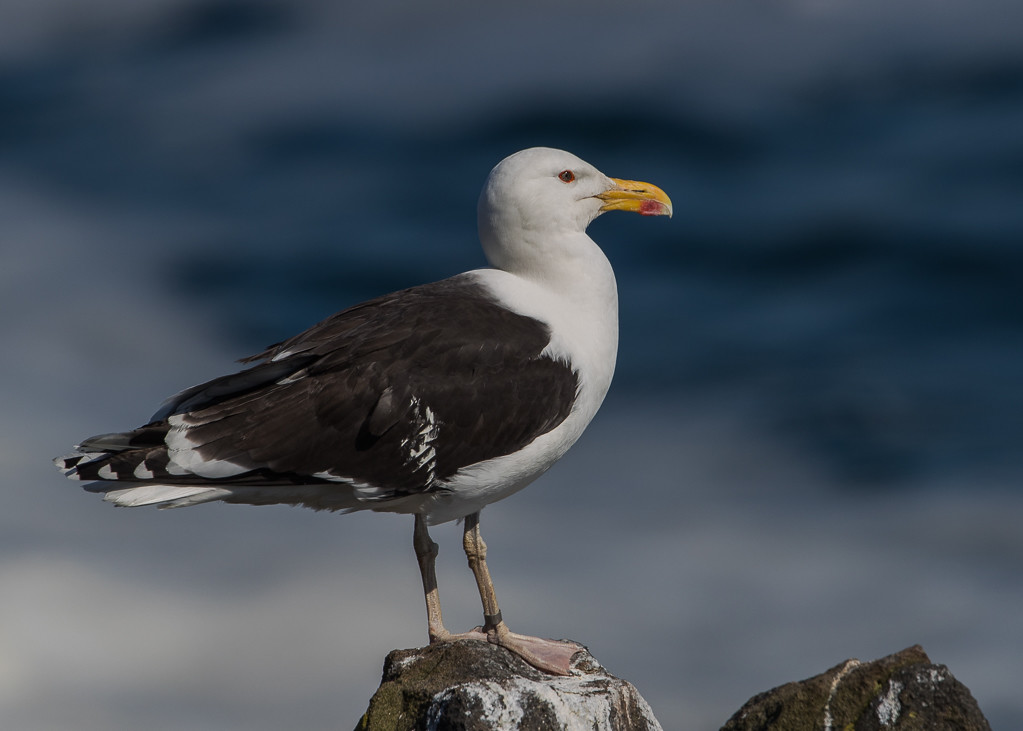 No one messes with this monster Gull.
No one messes with this monster Gull.
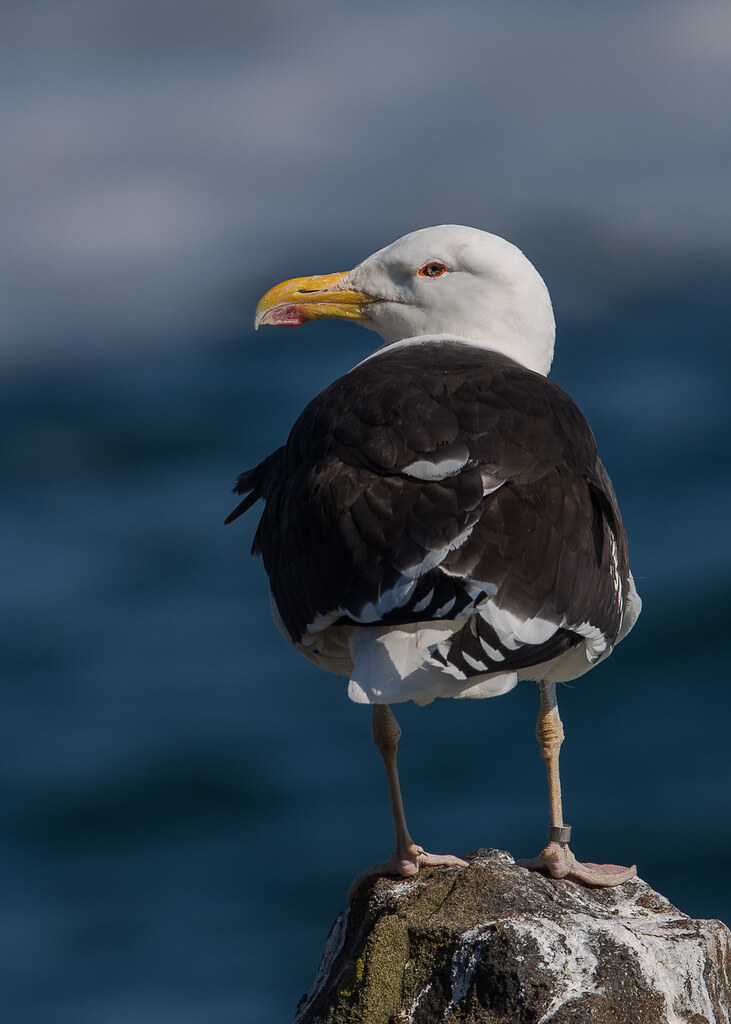 Even the bird ringers must think twice before going near a nest!
Like the other Gulls the GBB will both scavenge and hunt.
They fly along the cliffs looking for vulnerable chicks.
Even the bird ringers must think twice before going near a nest!
Like the other Gulls the GBB will both scavenge and hunt.
They fly along the cliffs looking for vulnerable chicks.
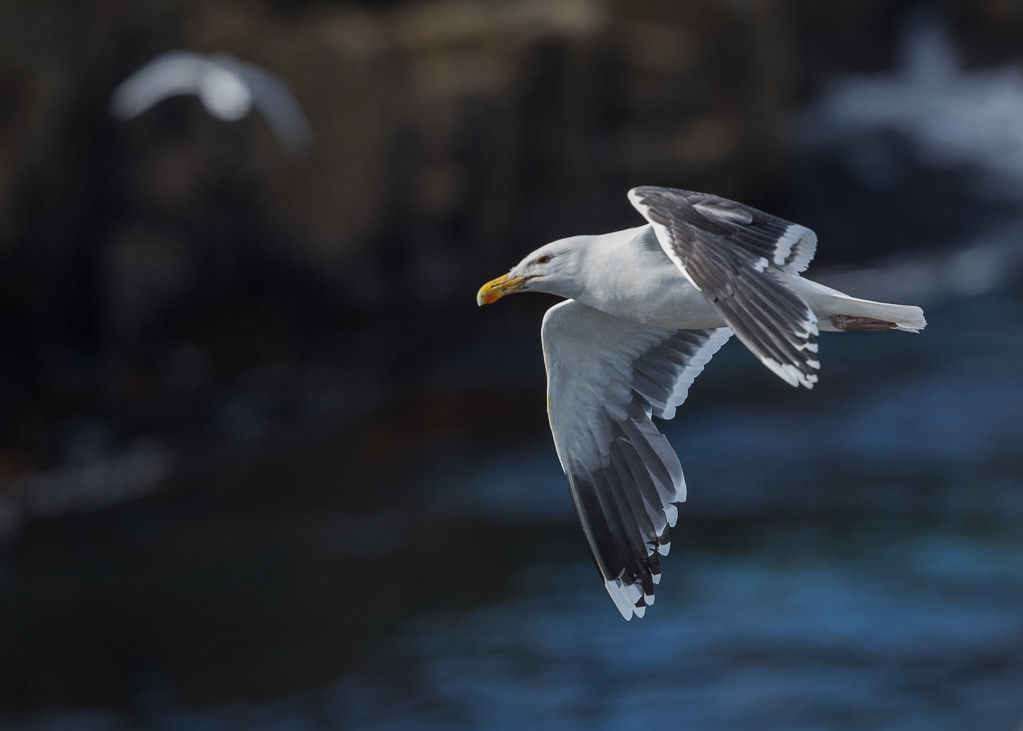 but that bill is capable of taking something much larger if it's desperate, an adult Puffin even.
but that bill is capable of taking something much larger if it's desperate, an adult Puffin even.
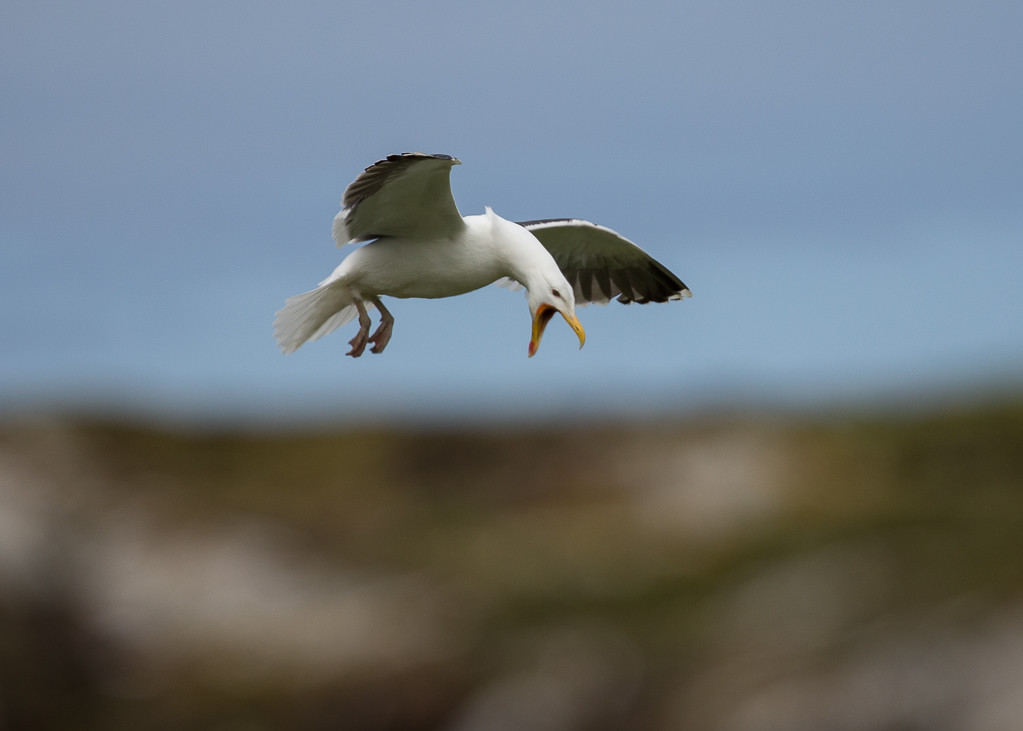 I didn't witness any successes this time but I have in the past.
The Herring Gulls, common were I live in North Wales are more likely to feed on shellfish and molluscs than the other gulls from what I could see. They are very cunning and drop their prey from a height to crack open shells. Like all the gulls they will feed on garbage too but there is none to be had on the island, well maybe the odd leftover scraps head in their direction.
I didn't witness any successes this time but I have in the past.
The Herring Gulls, common were I live in North Wales are more likely to feed on shellfish and molluscs than the other gulls from what I could see. They are very cunning and drop their prey from a height to crack open shells. Like all the gulls they will feed on garbage too but there is none to be had on the island, well maybe the odd leftover scraps head in their direction.
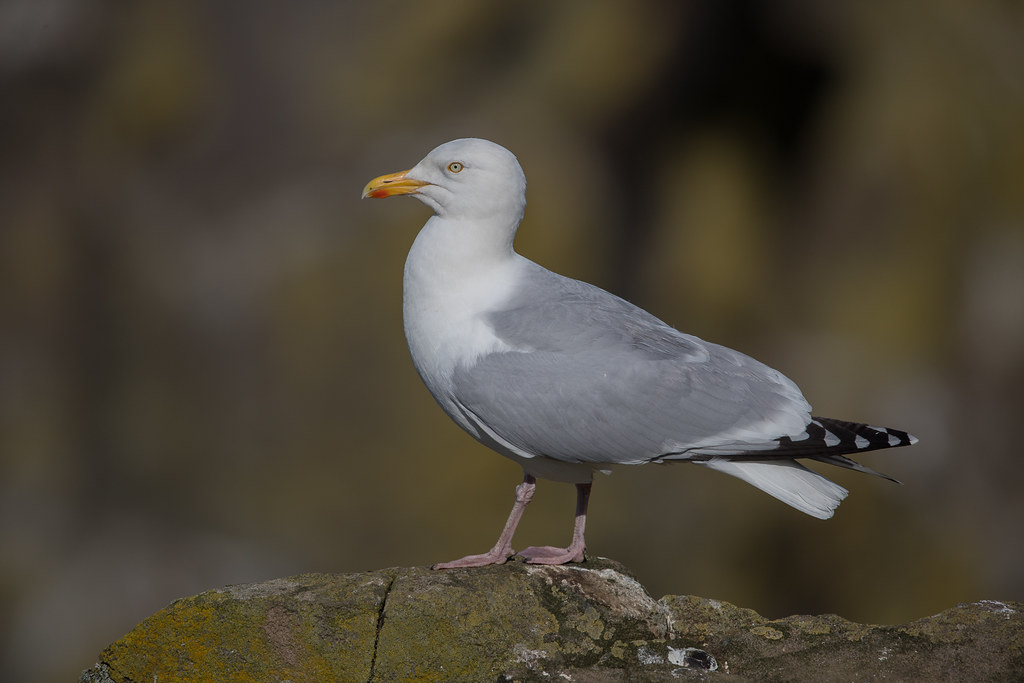 Often seen as a pest they will attack humans who happen to be holding food such as ice creams or chips having been encouraged to do so by people feeding them in the first place.
They will also join in the attack on returning Puffins too but that role seems to be dominated by the Lesser Black-backed Gulls.
Often seen as a pest they will attack humans who happen to be holding food such as ice creams or chips having been encouraged to do so by people feeding them in the first place.
They will also join in the attack on returning Puffins too but that role seems to be dominated by the Lesser Black-backed Gulls.
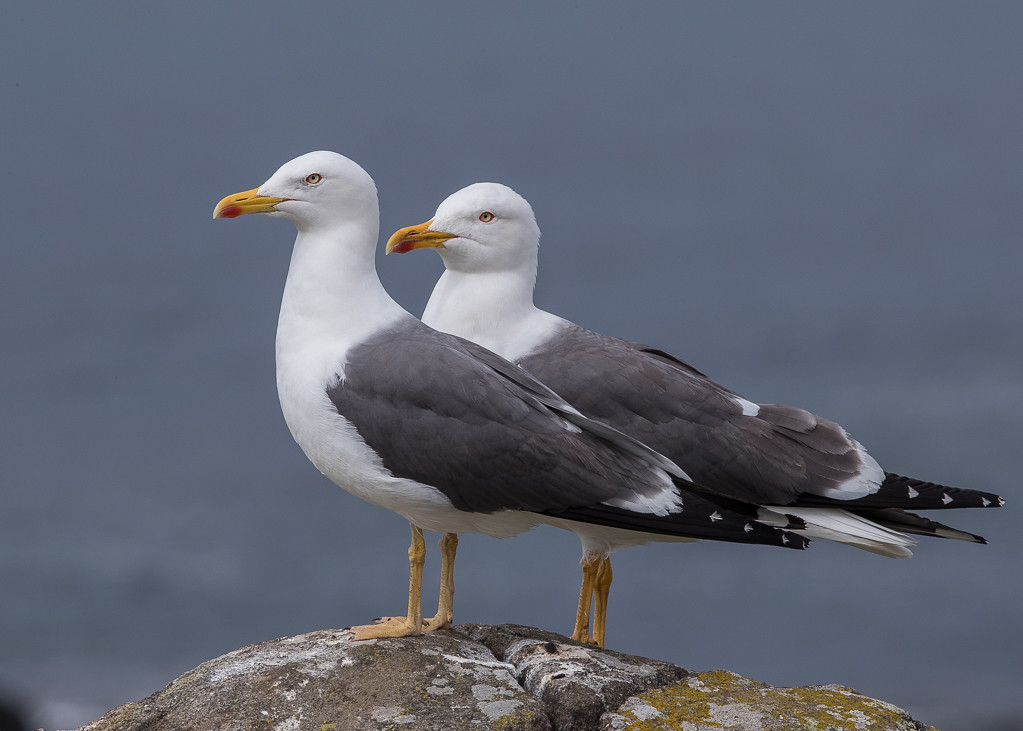 They are very sneaky ! They attack the Puffins as they sit on the cliff top waiting to approach their burrows.
They are very sneaky ! They attack the Puffins as they sit on the cliff top waiting to approach their burrows.
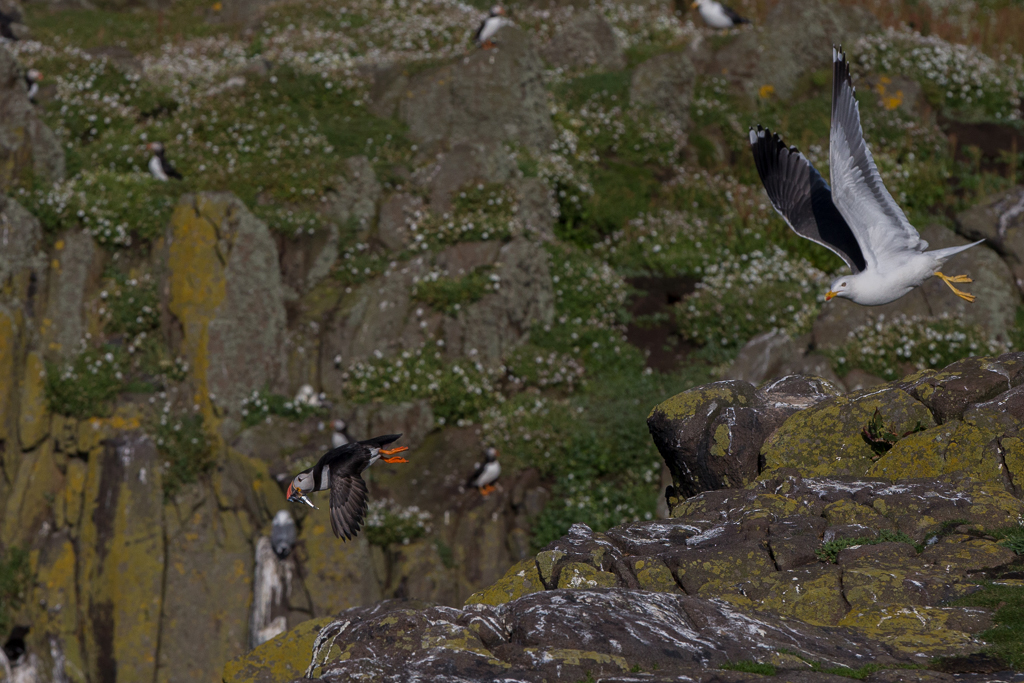 It doesn't seem too effective as I never saw them make a Puffin drop it catch in that way, however, in other areas they just sit on the ground around the burrow entrances and mob a little Puffin en masse.
That was very successful and a high proportion of the Puffins lost their catch as can be seen here.
It doesn't seem too effective as I never saw them make a Puffin drop it catch in that way, however, in other areas they just sit on the ground around the burrow entrances and mob a little Puffin en masse.
That was very successful and a high proportion of the Puffins lost their catch as can be seen here.
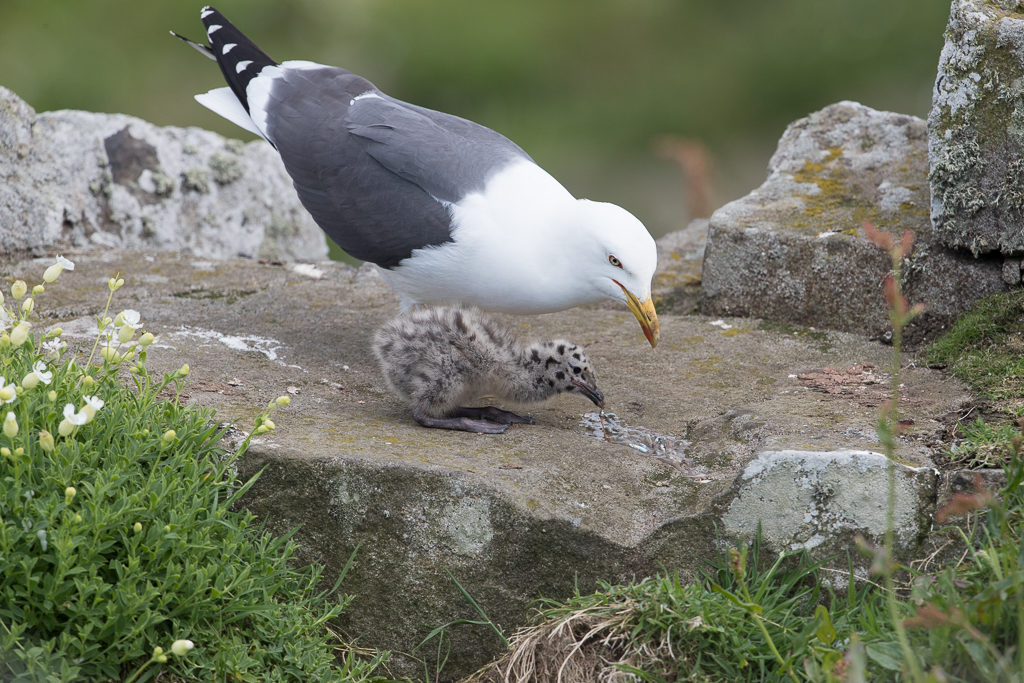 Pretty revolting! The parent throws up and the chick eats the result.
Pretty revolting! The parent throws up and the chick eats the result.
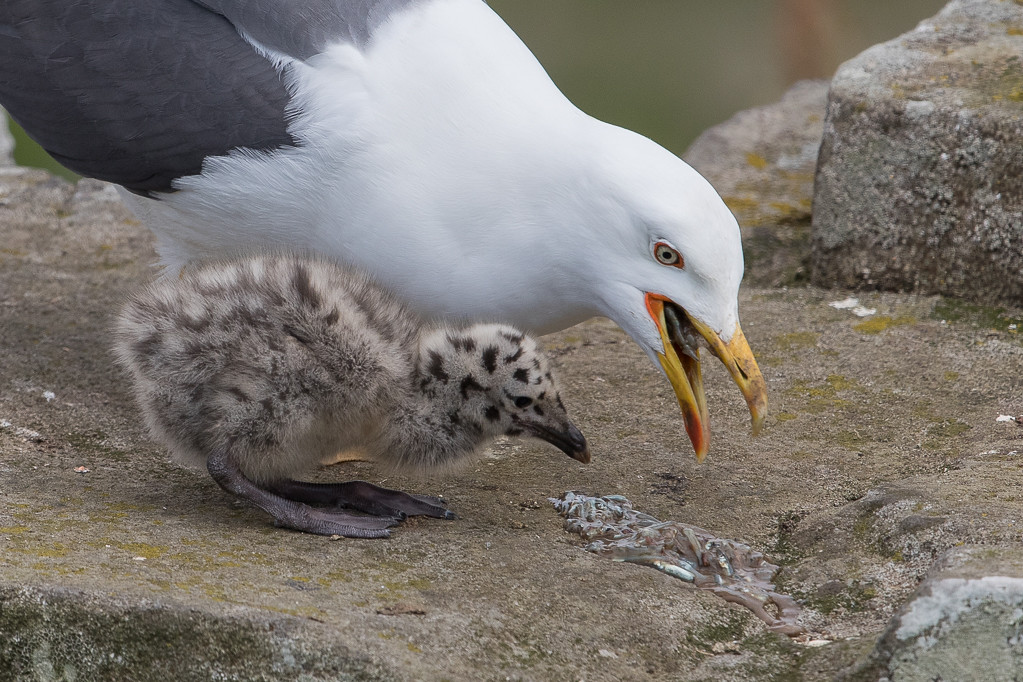 As you can see, it's full of stolen Sand Eels.
There are one or two particular rogue birds though. They are not content to steal another's dinner. They will steal their young given half a chance. Tern chicks are a favourite but they will stoop as low as stealing from other gulls too.
As you can see, it's full of stolen Sand Eels.
There are one or two particular rogue birds though. They are not content to steal another's dinner. They will steal their young given half a chance. Tern chicks are a favourite but they will stoop as low as stealing from other gulls too.
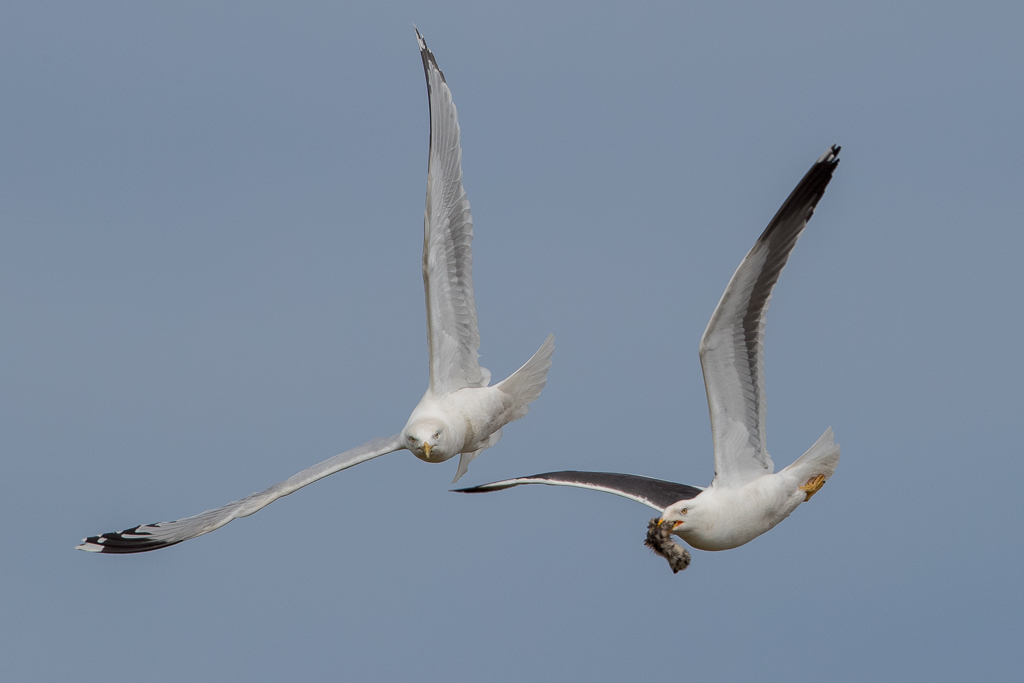 This one has grabbed a Herring Gull chick and the adult has given chase.
The Herring Gull's cries of desperation are heard by others and soon they join in the rescue attempt.
This one has grabbed a Herring Gull chick and the adult has given chase.
The Herring Gull's cries of desperation are heard by others and soon they join in the rescue attempt.
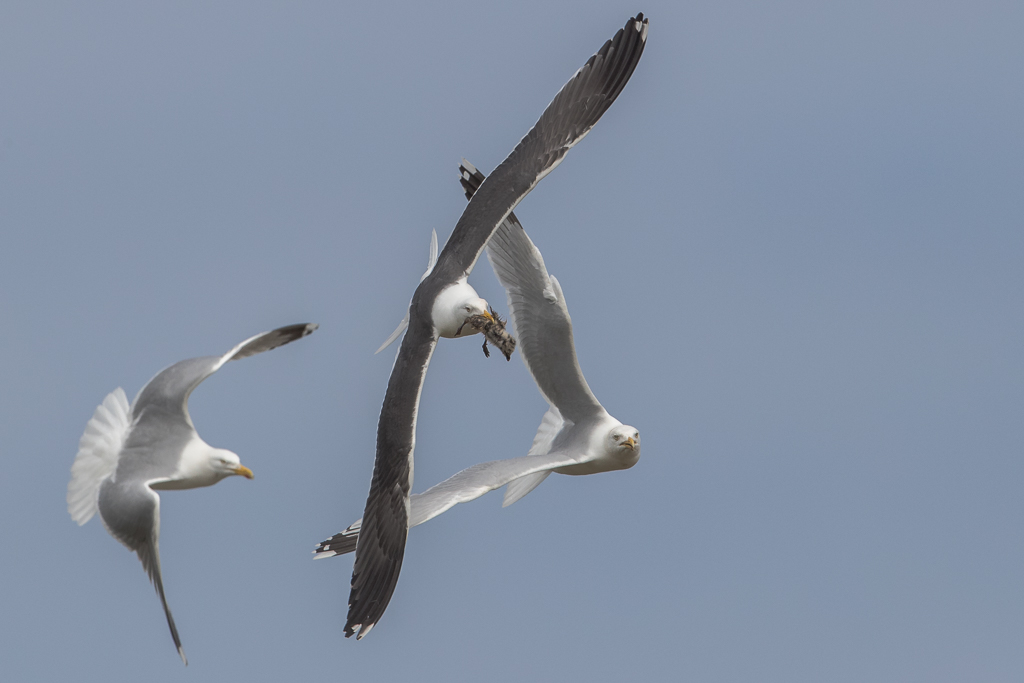 Sometimes though, too many cooks spoil the broth so to speak.
Sometimes though, too many cooks spoil the broth so to speak.
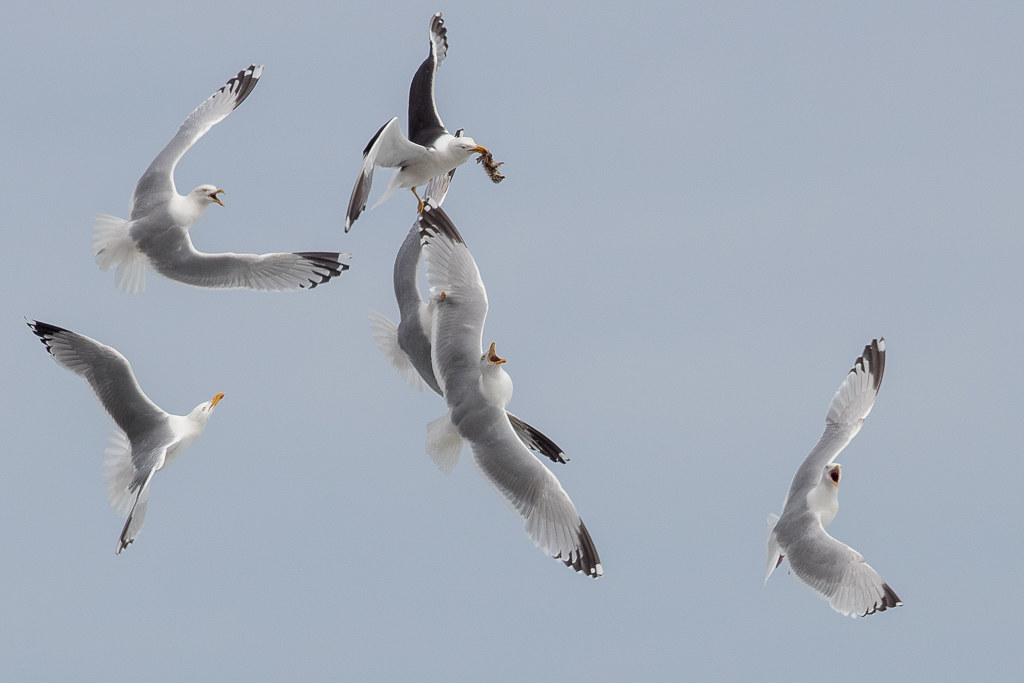 A Gull joining in the posse is one Gull too many.
A Gull joining in the posse is one Gull too many.
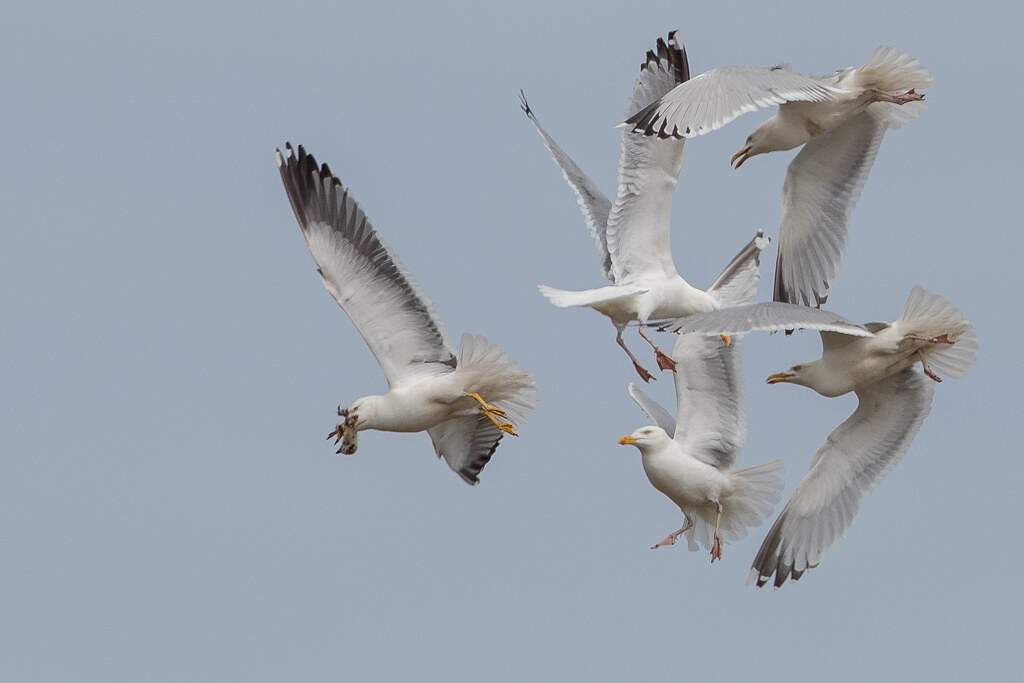 It flies in to the following group just as they were about to catch up with the thief.
The following mob is dispersed and the Lesser Black-backed makes good it's escape.
It flies in to the following group just as they were about to catch up with the thief.
The following mob is dispersed and the Lesser Black-backed makes good it's escape.
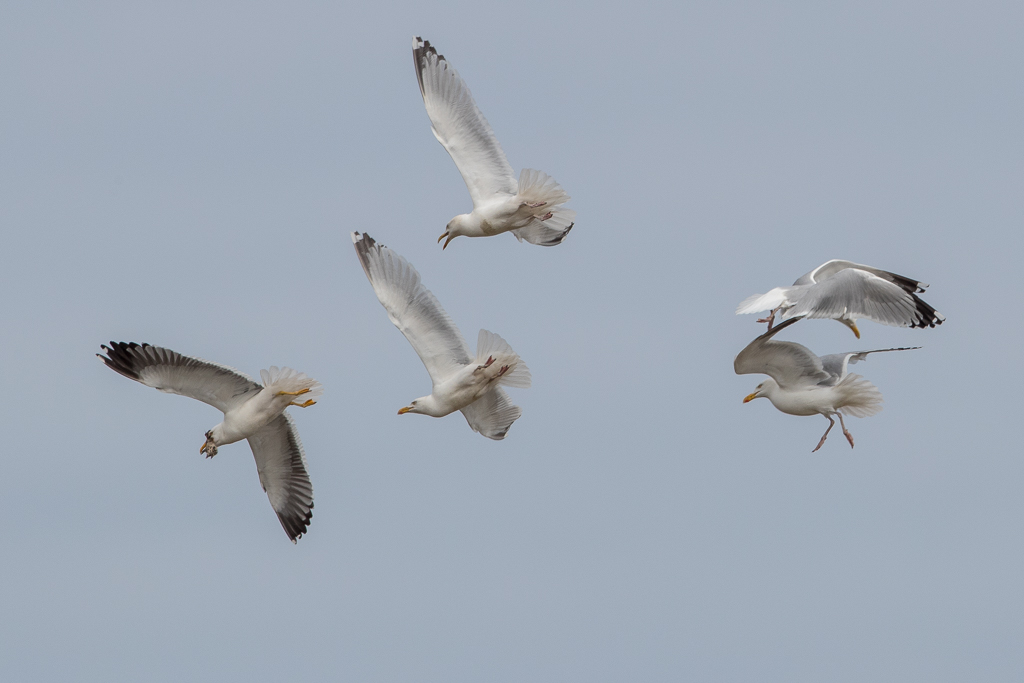 Well, that's one bird's demise but another's survival.
As the sun goes down on another day those of us left take in the beauty of a glorious sunset.
Well, that's one bird's demise but another's survival.
As the sun goes down on another day those of us left take in the beauty of a glorious sunset.
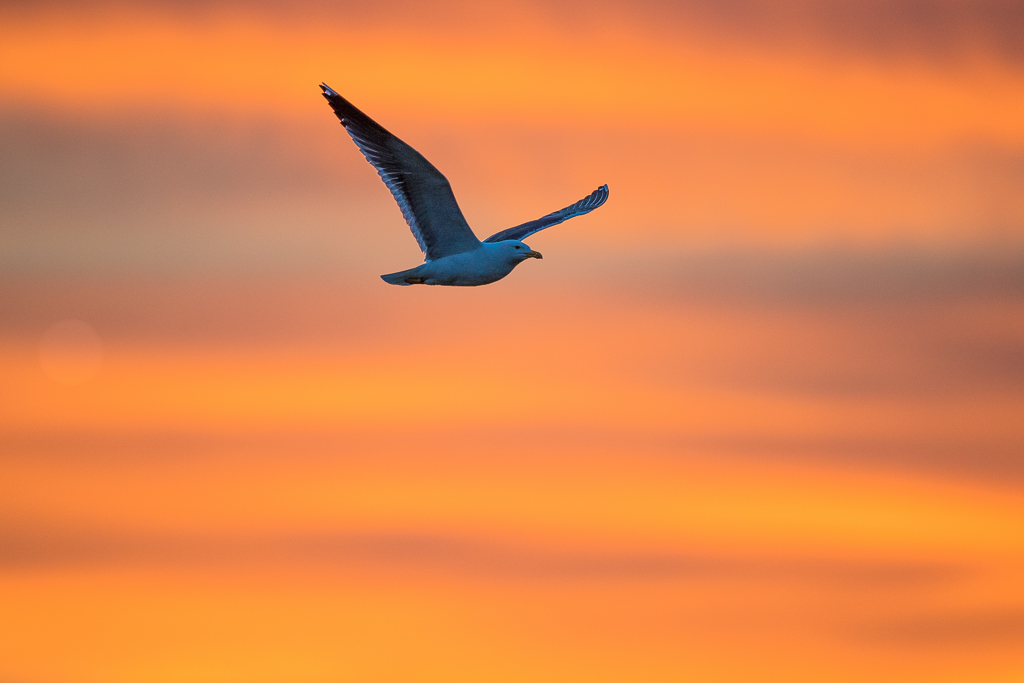 Some won't live to see another.
Me ? Well thankfully I have the security of home to return to not that life on the May is in any way uncomfortable nowadays. Returning to the mainland always makes me a little sad. There is definitely something special about being cut off from the rest of the world, well so it seems anyway.
Once again, my thanks to all who made my visit possible.
Until the next time.Farewell.
Some won't live to see another.
Me ? Well thankfully I have the security of home to return to not that life on the May is in any way uncomfortable nowadays. Returning to the mainland always makes me a little sad. There is definitely something special about being cut off from the rest of the world, well so it seems anyway.
Once again, my thanks to all who made my visit possible.
Until the next time.Farewell.
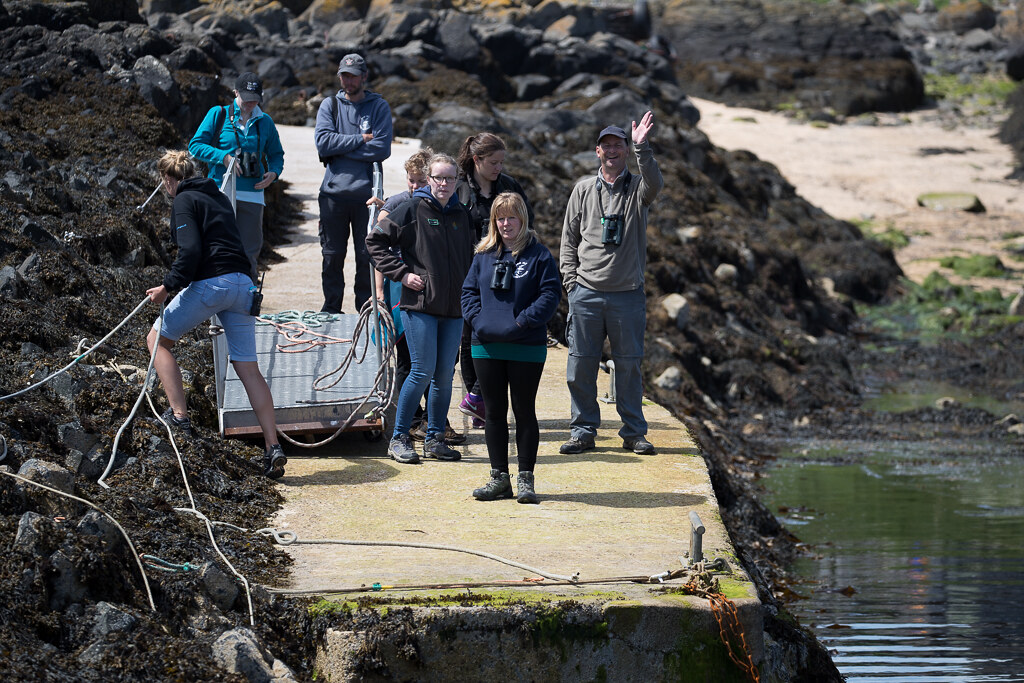
During the summer months there are not too many species of birds to be seen on the May, but had we been a month or two earlier there are a whole host of possibilities both with regular migrants dropping in as well as the odd exotic. A Bluethroat, way up my list of want to see species had been found on the island just a couple of weeks or so before we got there. Ah, well we had to make do with more humble species.
Wren, Dunnock and even a pair of Barn Swallow breed on the island in small numbers, Feral Pigeon looking something like a Rock Dove are fairly plentiful and are probably an attraction for the occasional visit by a Peregrine which used to breed on the island but doesn't appear to do so now.
Starlings are reasonably abundant too but I think they are non breeding ones.
There are several pairs of Rock Pipit.
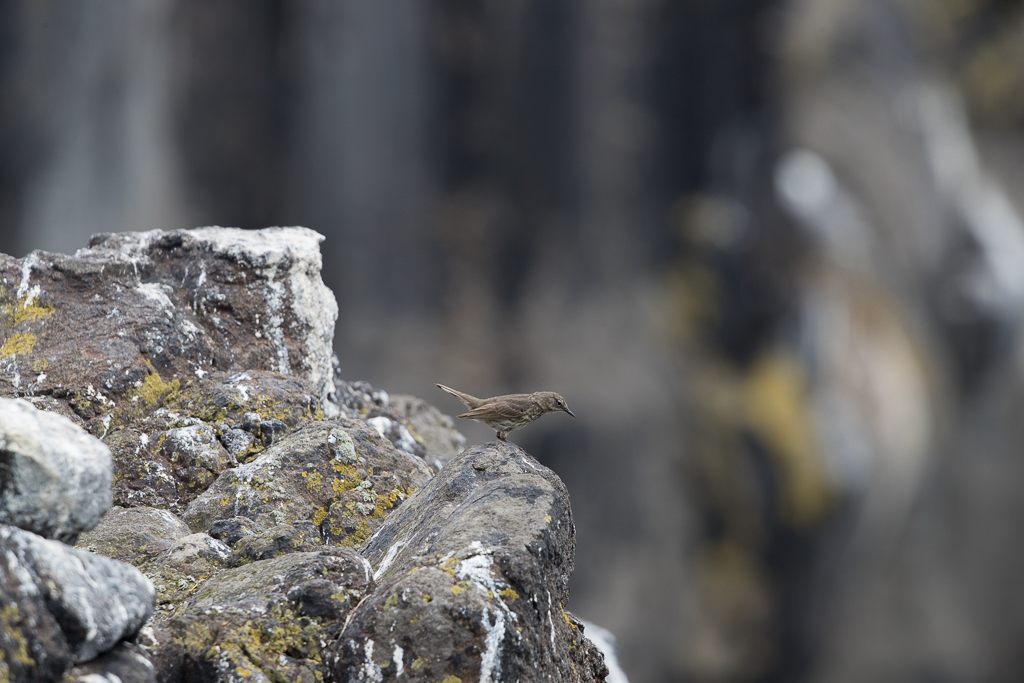 They look so insignificant when you see them hunting around the cliff tops, every other bird, even the Puffin, is huge by comparison.
They look so insignificant when you see them hunting around the cliff tops, every other bird, even the Puffin, is huge by comparison.
 You need to stick a long lens on for a change, that shot taken with a 2.0x converter on a 500mm lens.
Where you find the Rock Pipit you often find the Pied Wagtails too.
You need to stick a long lens on for a change, that shot taken with a 2.0x converter on a 500mm lens.
Where you find the Rock Pipit you often find the Pied Wagtails too.
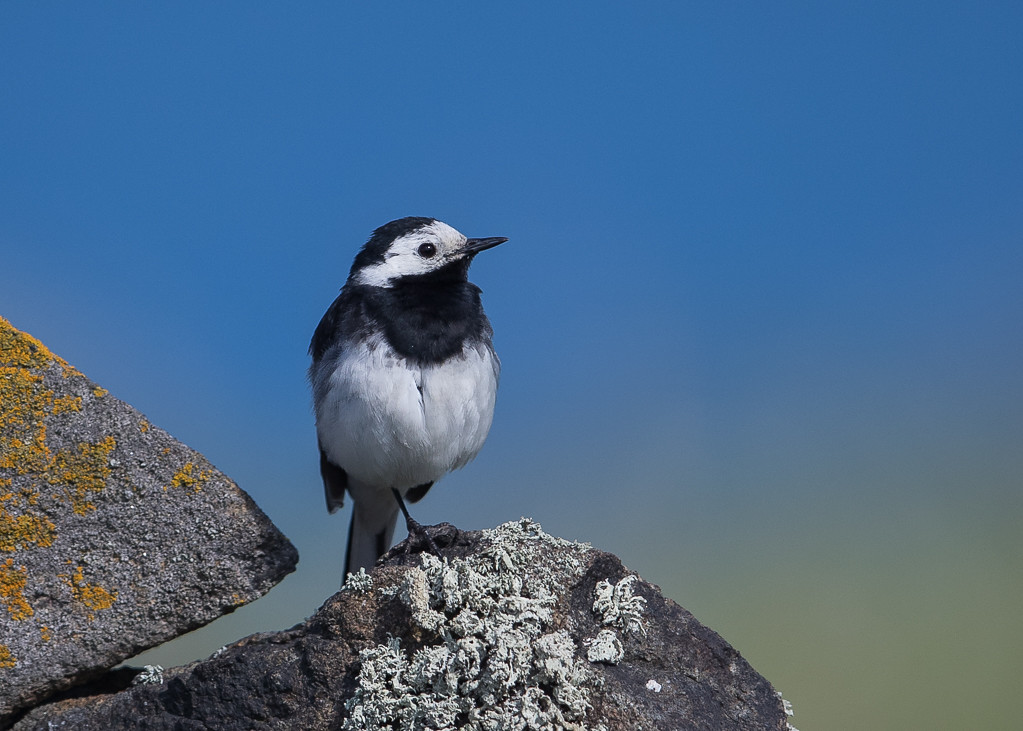 Sometimes on the rocks but more often on the grassy areas.
Sometimes on the rocks but more often on the grassy areas.
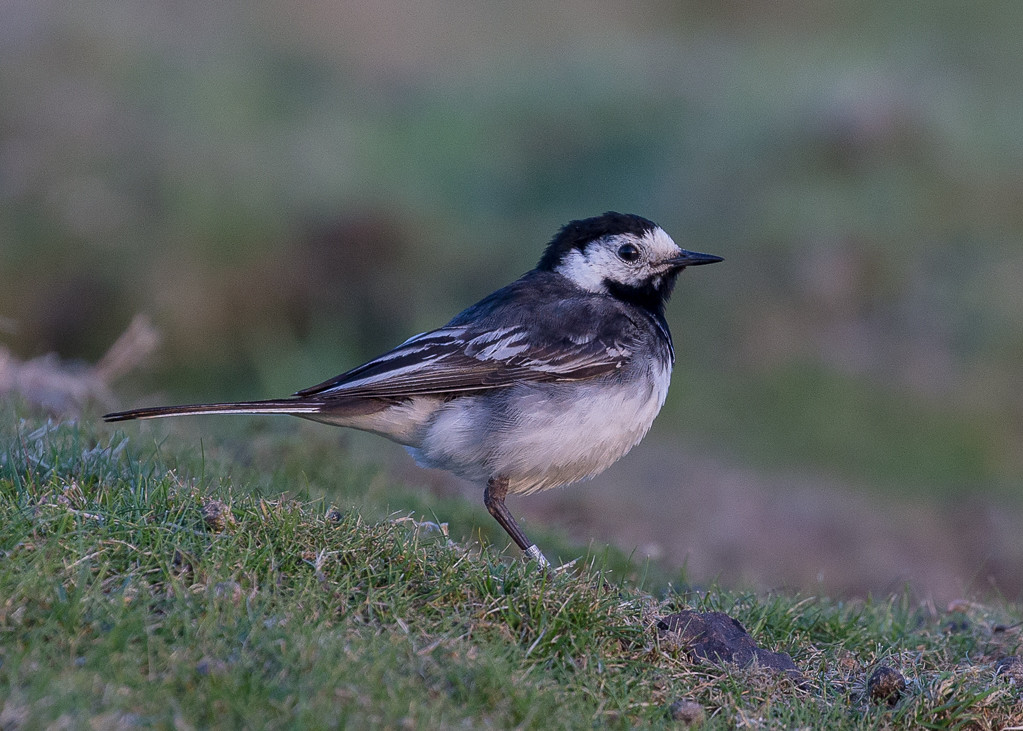 hunting the same insect prey as the Pipits.
hunting the same insect prey as the Pipits.
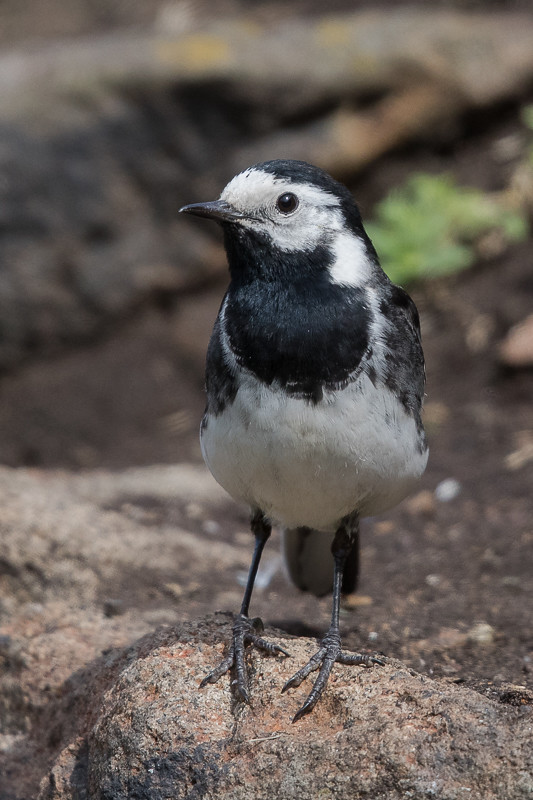 Another breeding bird in smaller numbers is the Oystercatcher.
A pair must have been nesting close to a main path as they were always trying to distract you as you walked past.
Another breeding bird in smaller numbers is the Oystercatcher.
A pair must have been nesting close to a main path as they were always trying to distract you as you walked past.
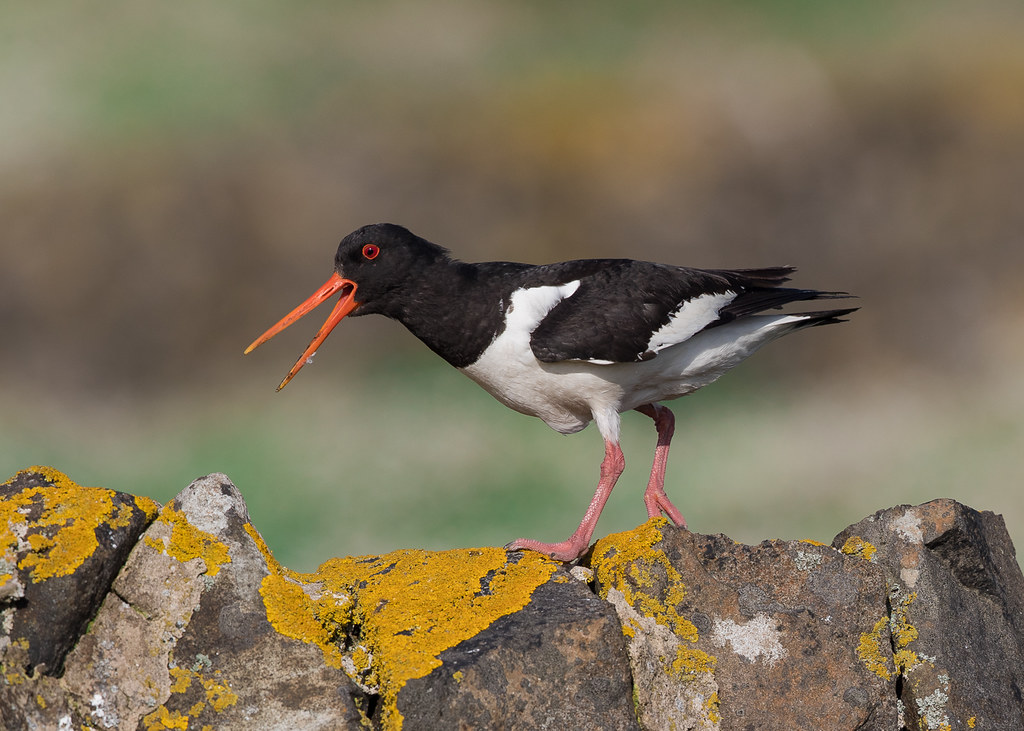 Very vocal indeed
Very vocal indeed
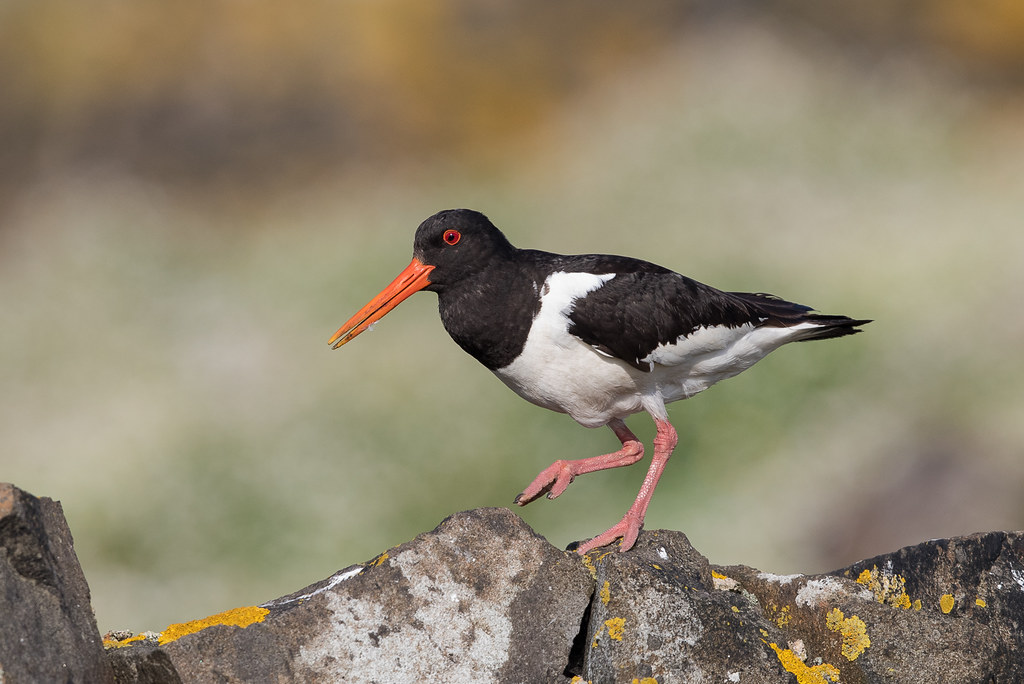 They would walk up and down the wall
They would walk up and down the wall
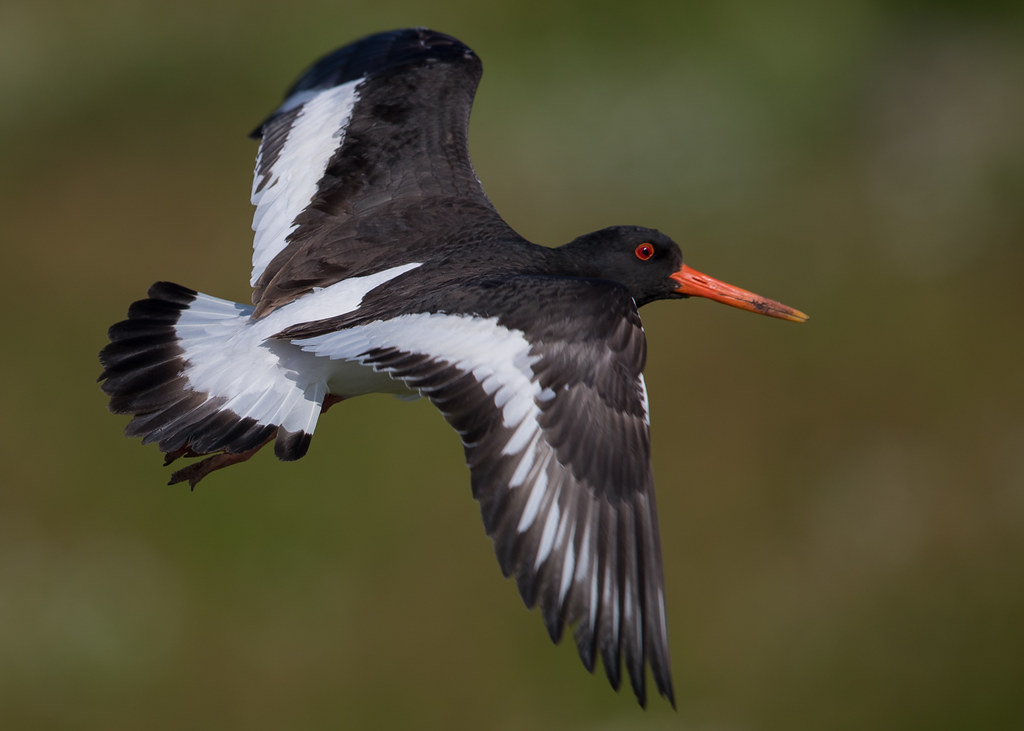 before flying off and giving more warning cries as they went.
before flying off and giving more warning cries as they went.
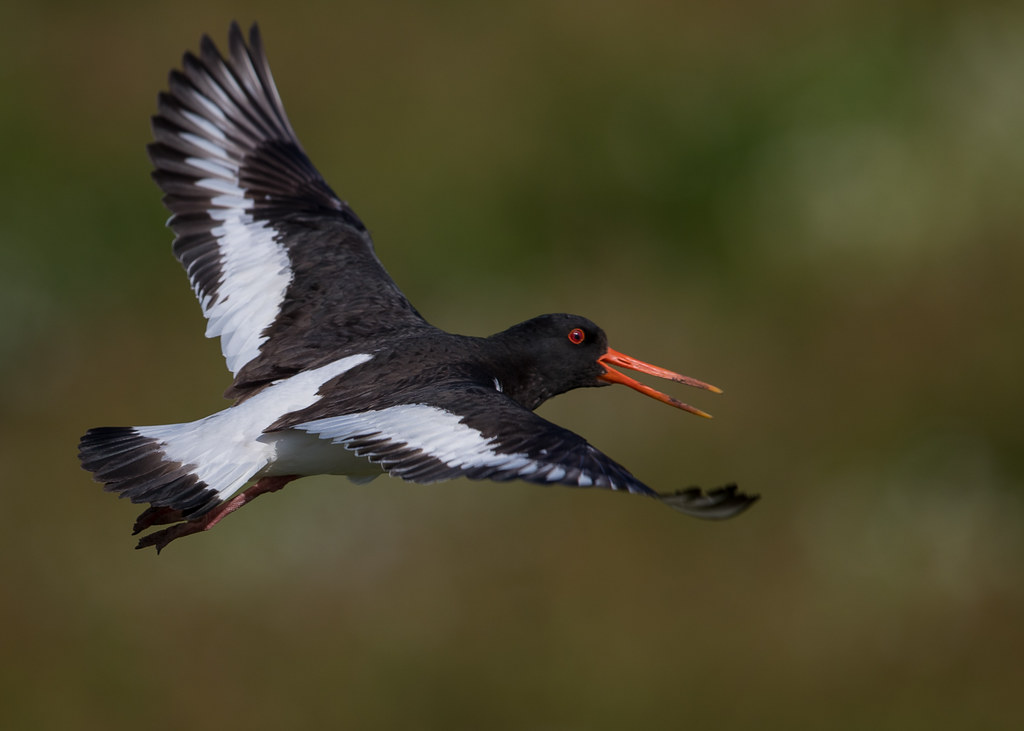 One of a pair have been known to feign injury to try and attract the attention of a predator and distract them from finding their nest. When the predator comes in to attack, the Oystercatcher flies off taking the predator away as they do so.
The other breeding bird that hasn't been mentioned as yet is the Eider Duck. If you arrive in spring time the mating calls of the males ring around the island constantly. Once they have won over their mate they disappear off and leave the Mrs to do all the hard work. I have no respect for the male Eiders whatsoever!
One of a pair have been known to feign injury to try and attract the attention of a predator and distract them from finding their nest. When the predator comes in to attack, the Oystercatcher flies off taking the predator away as they do so.
The other breeding bird that hasn't been mentioned as yet is the Eider Duck. If you arrive in spring time the mating calls of the males ring around the island constantly. Once they have won over their mate they disappear off and leave the Mrs to do all the hard work. I have no respect for the male Eiders whatsoever!
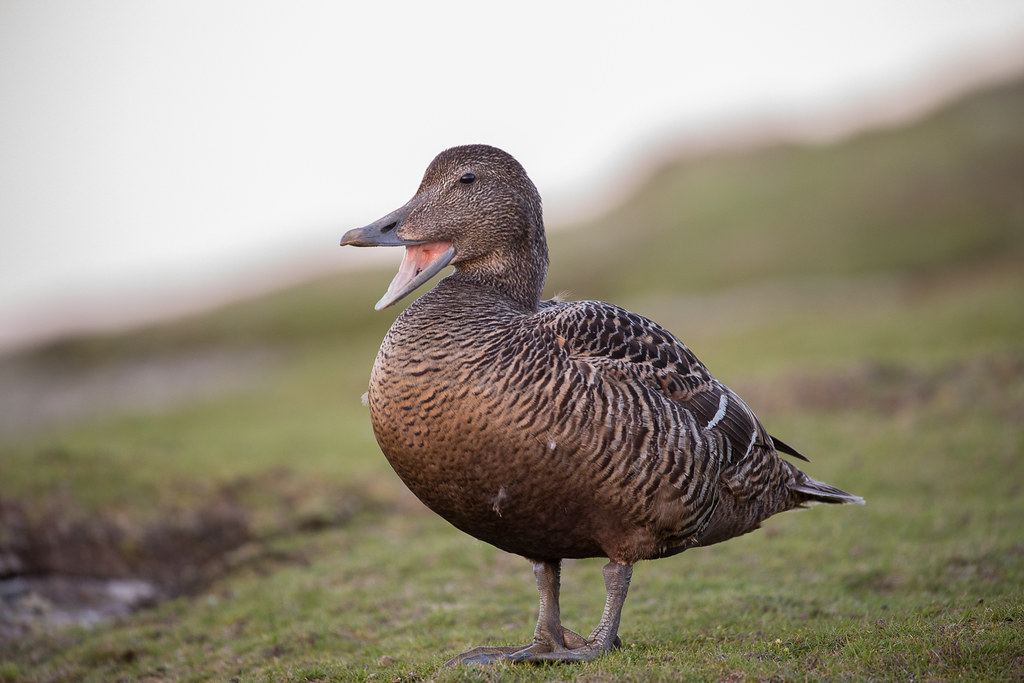 The females are somewhat dull in appearance though.A bit more interesting with a quick flutter of the wings.
The females are somewhat dull in appearance though.A bit more interesting with a quick flutter of the wings.
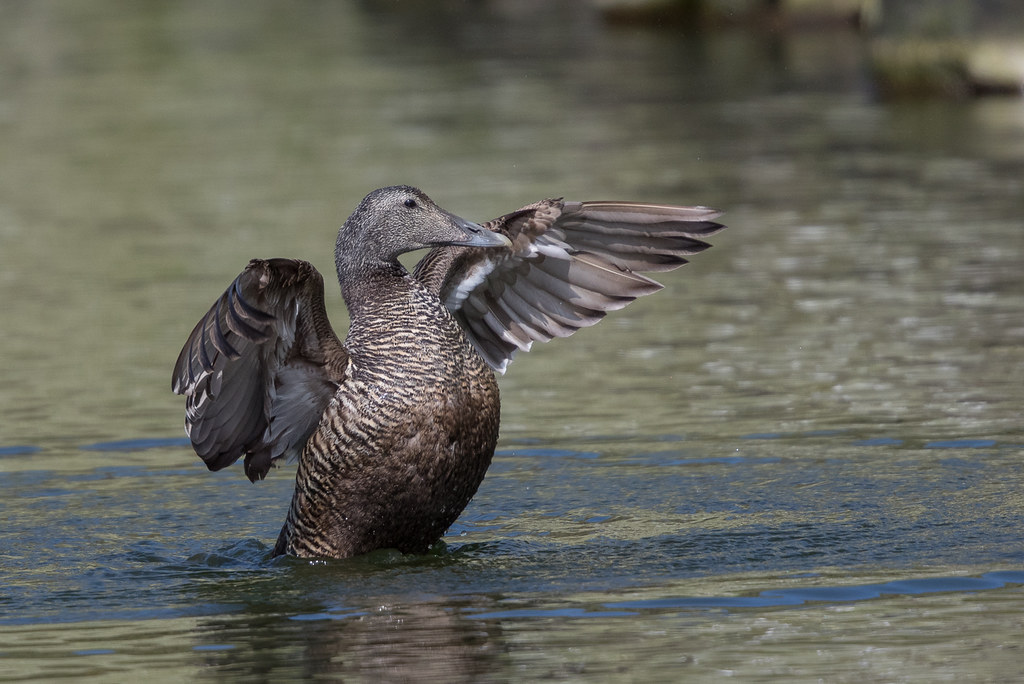 but nevertheless. Dull!
Well not if they have a few ducklings own tow!
but nevertheless. Dull!
Well not if they have a few ducklings own tow!
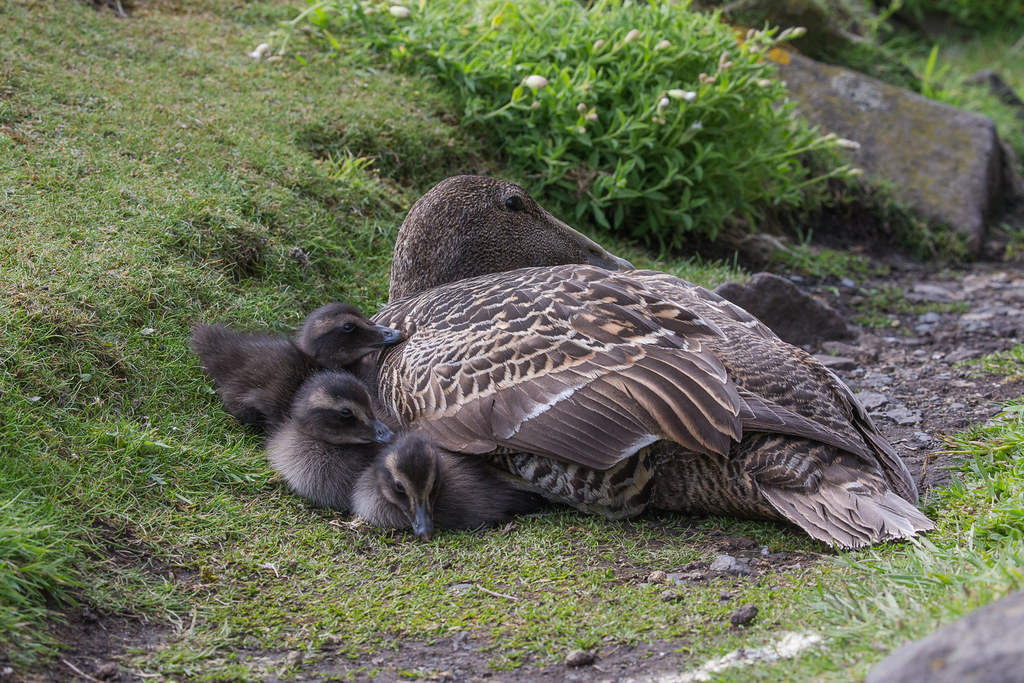 This particular female had made her nest right up against the Low Light wall and I didn't even notice her at first... that's why they are dull!
Unlike the seabirds on the cliffs who simply lay an egg directly on to the rocky ledge, the Eider's nest is pure luxury.Lined with their famous down, it's the perfect bedding. Once the eggs hatch though, the whole family is up and away.
This particular female had made her nest right up against the Low Light wall and I didn't even notice her at first... that's why they are dull!
Unlike the seabirds on the cliffs who simply lay an egg directly on to the rocky ledge, the Eider's nest is pure luxury.Lined with their famous down, it's the perfect bedding. Once the eggs hatch though, the whole family is up and away.
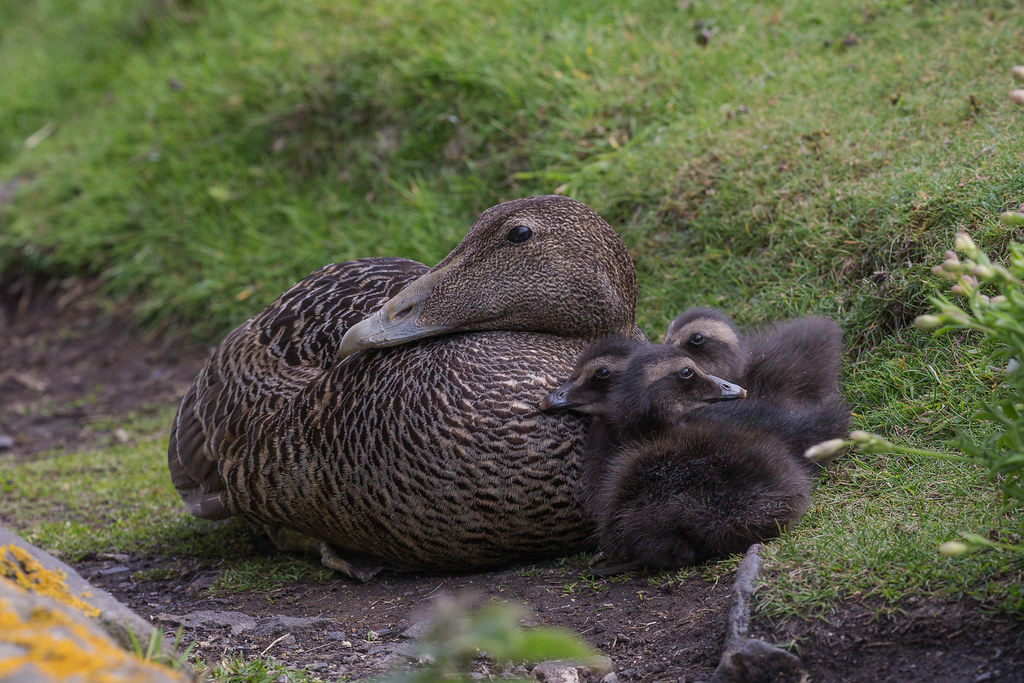 Theses Ducklings are literally a day old but soon they take the long walk up the hill to join the other females and their young in what appears to be a creche. Used to us being around she posed for the shots before deciding the babies were ready for their trek.
Theses Ducklings are literally a day old but soon they take the long walk up the hill to join the other females and their young in what appears to be a creche. Used to us being around she posed for the shots before deciding the babies were ready for their trek.
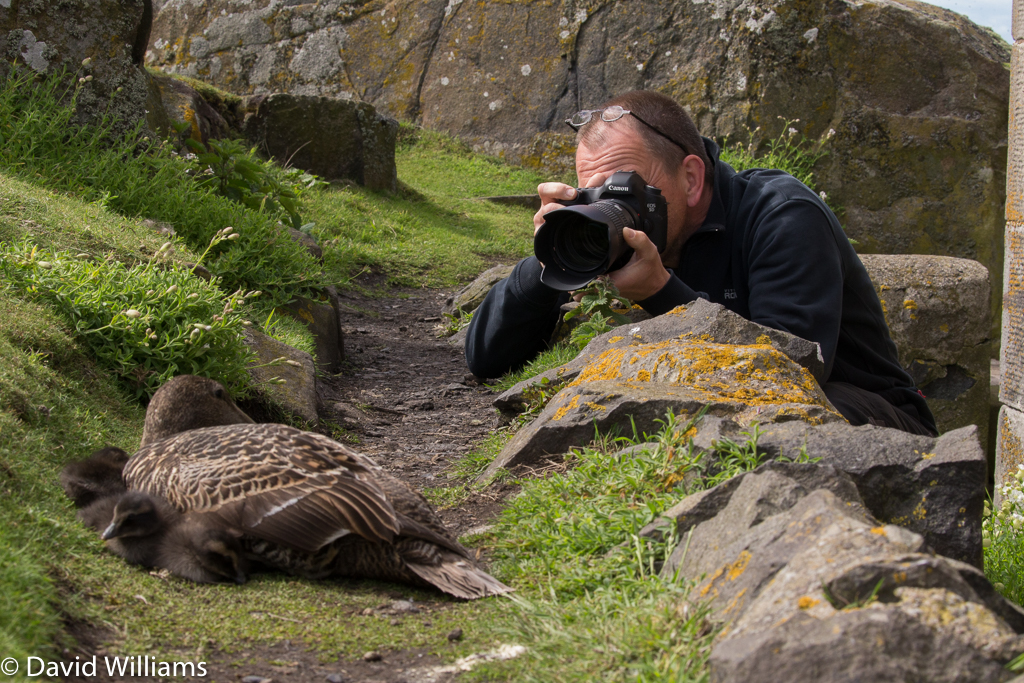 I would imagine they are very vulnerable at this stage of their lives but I didn't actually witness any casualties.
And there are those that would take advantage.
T.B.C.
I would imagine they are very vulnerable at this stage of their lives but I didn't actually witness any casualties.
And there are those that would take advantage.
T.B.C.
Along with about 250,000 breeding birds there are other residents besides the research teams and visitors. The Isle of May is an important breeding site for Grey Seal and apparently during the winter breeding and whelping season there are many more than can be seen during the summer months.
Views of the Seals are best seen from a boat on arrival or departure.
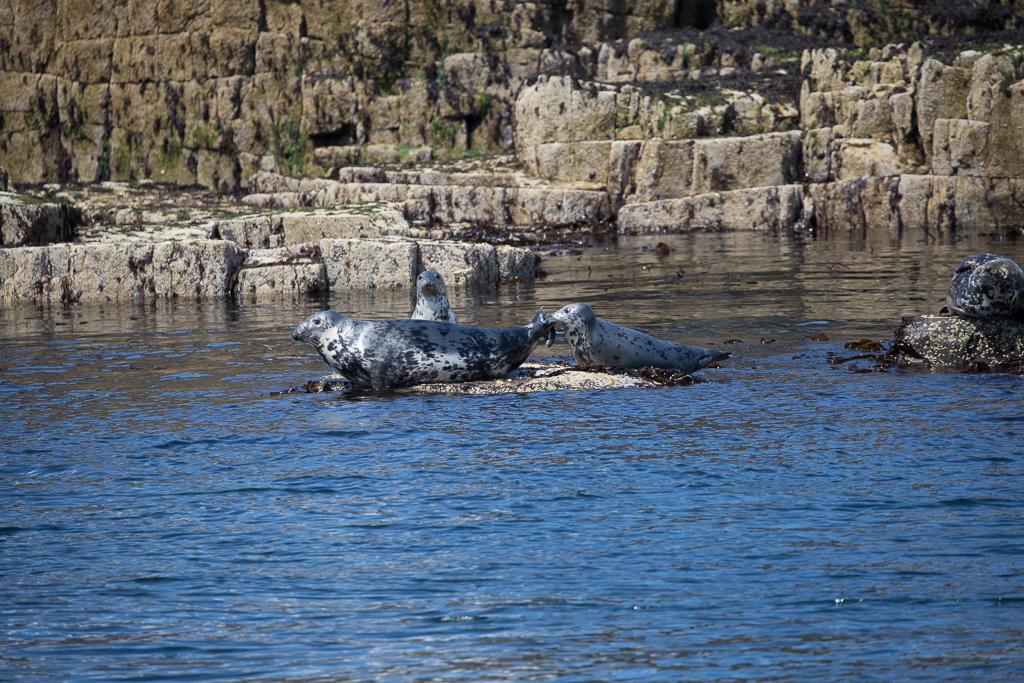 but we could make them out from our Low Light accommodationlying on the rocks, albeit half a mile or so away.
but we could make them out from our Low Light accommodationlying on the rocks, albeit half a mile or so away.
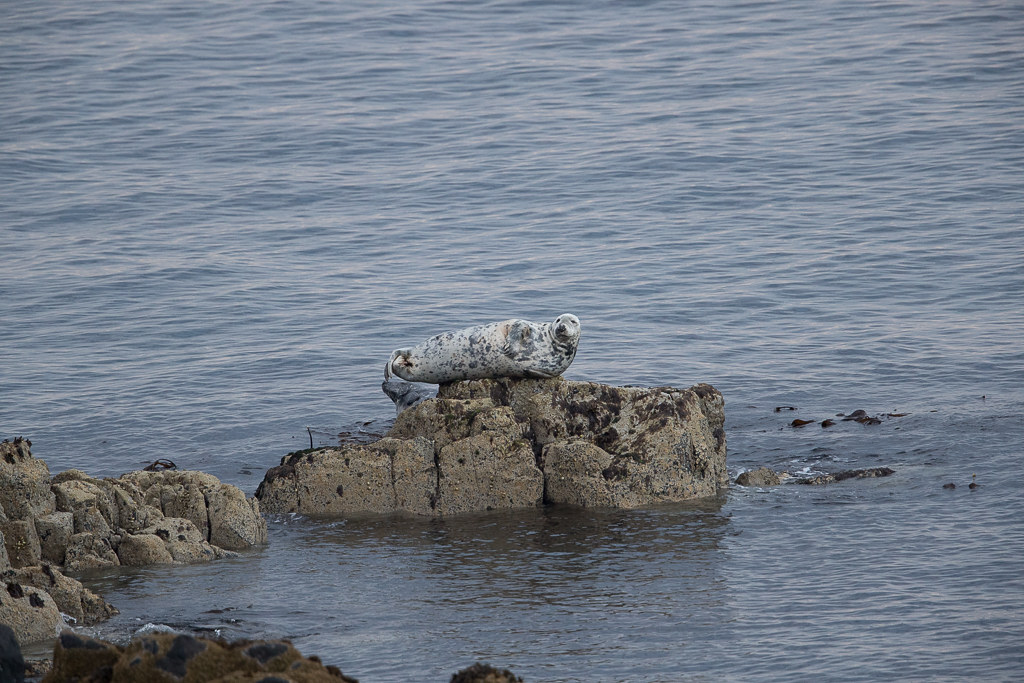 The areas they are in are both inaccessible to the visitor as well as being very dangerous as the rocks are apparently covered in a slime of seaweed.
The areas they are in are both inaccessible to the visitor as well as being very dangerous as the rocks are apparently covered in a slime of seaweed.
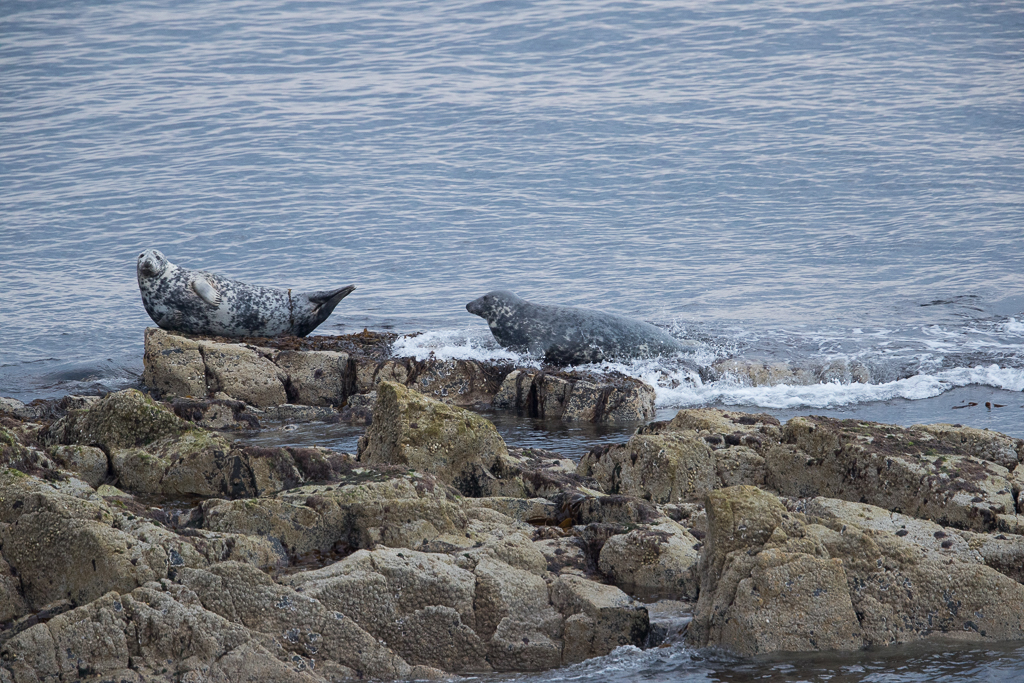 If they sensed you are anywhere near they are probably off like a shot and it's amazing how fast they can move despite their appearance.
Occasionally you caught sight of one in the sea, sometimes quite close by.
If they sensed you are anywhere near they are probably off like a shot and it's amazing how fast they can move despite their appearance.
Occasionally you caught sight of one in the sea, sometimes quite close by.
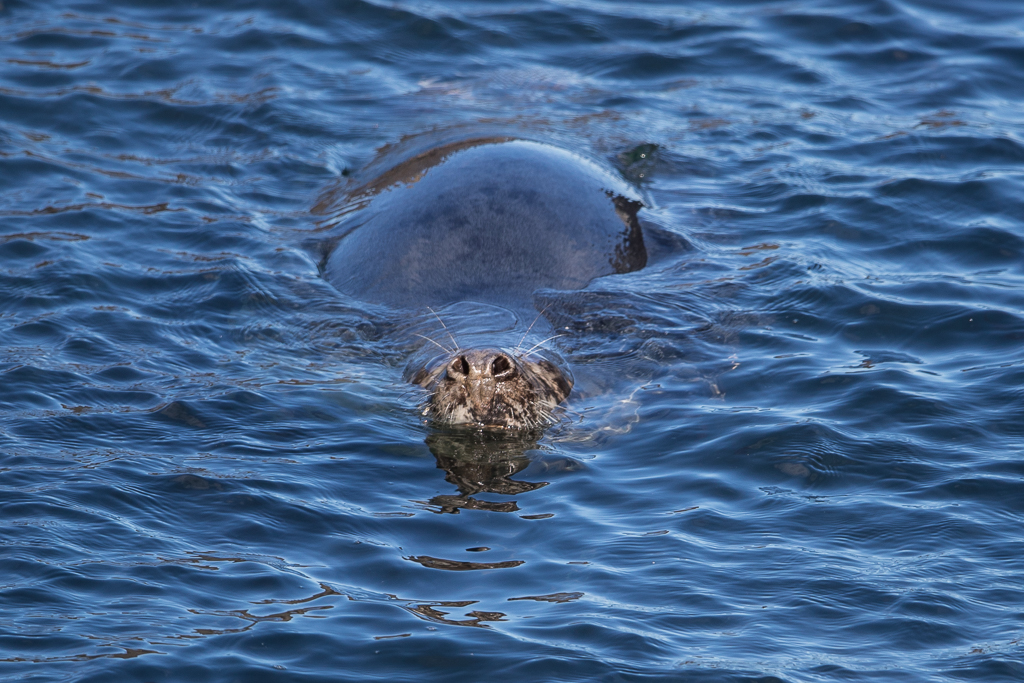 but by far the best views came on our last full day when this youngster decided he was going to haul himself up on a rock directly below me.
but by far the best views came on our last full day when this youngster decided he was going to haul himself up on a rock directly below me.
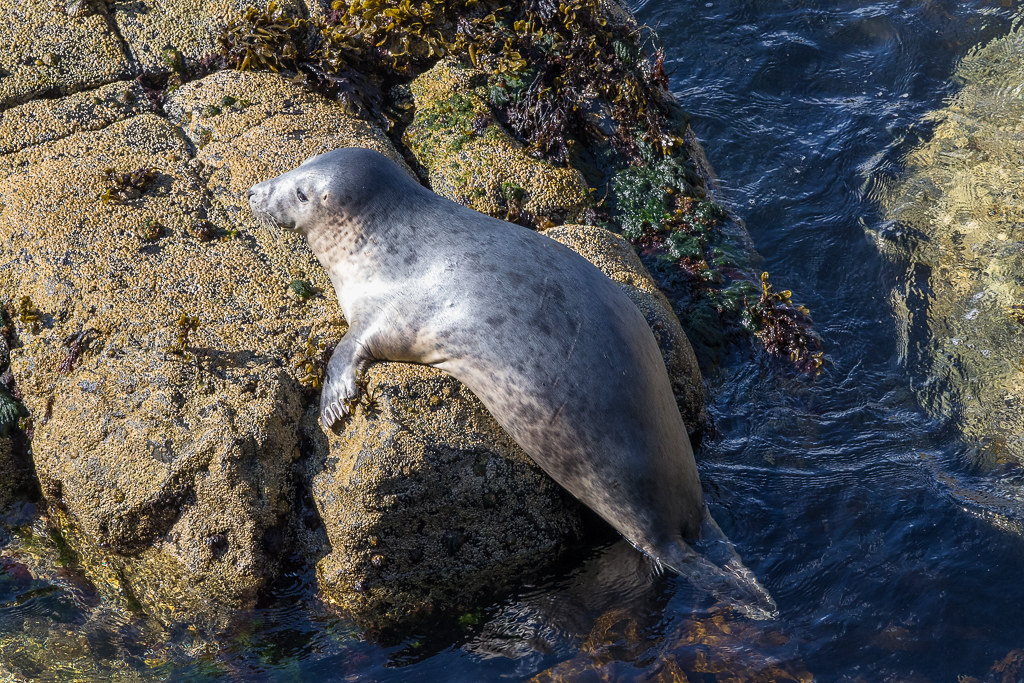 Aware of my presence but feeling totally secure with 50 foot of cliff and a bit of water between us.
Aware of my presence but feeling totally secure with 50 foot of cliff and a bit of water between us.
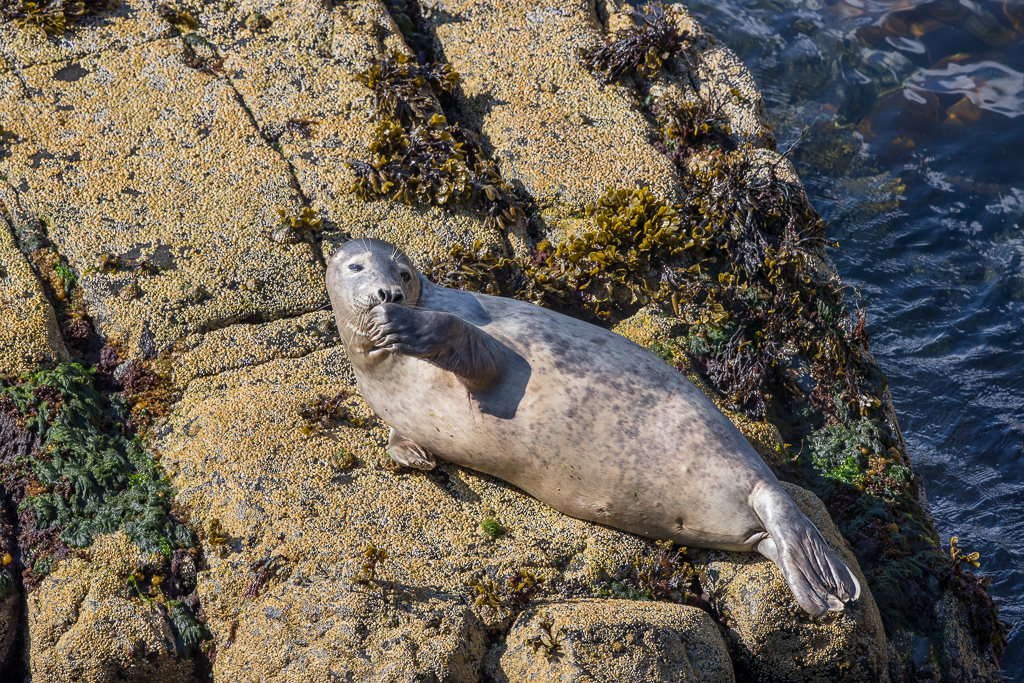 A quick pose for a photograph and then off to sleep!
A quick pose for a photograph and then off to sleep!
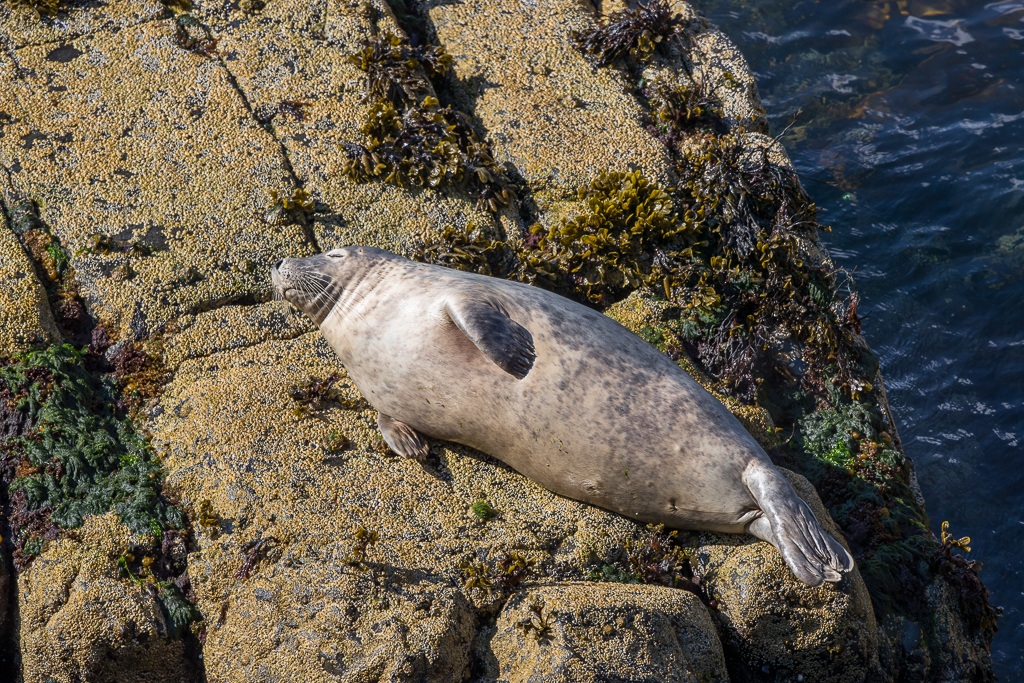 The water is so clear around the May that if you are lucky you can actually see them swim, as one of the others commented, it gives you a whole new opinion of them. So graceful and agile in their natural environment.
There are two other mammals that I'm aware of that live on the island. Mouse, which I have yet to see and Rabbit. Of the latter there are hundreds!
Cute aren't they !
The water is so clear around the May that if you are lucky you can actually see them swim, as one of the others commented, it gives you a whole new opinion of them. So graceful and agile in their natural environment.
There are two other mammals that I'm aware of that live on the island. Mouse, which I have yet to see and Rabbit. Of the latter there are hundreds!
Cute aren't they !
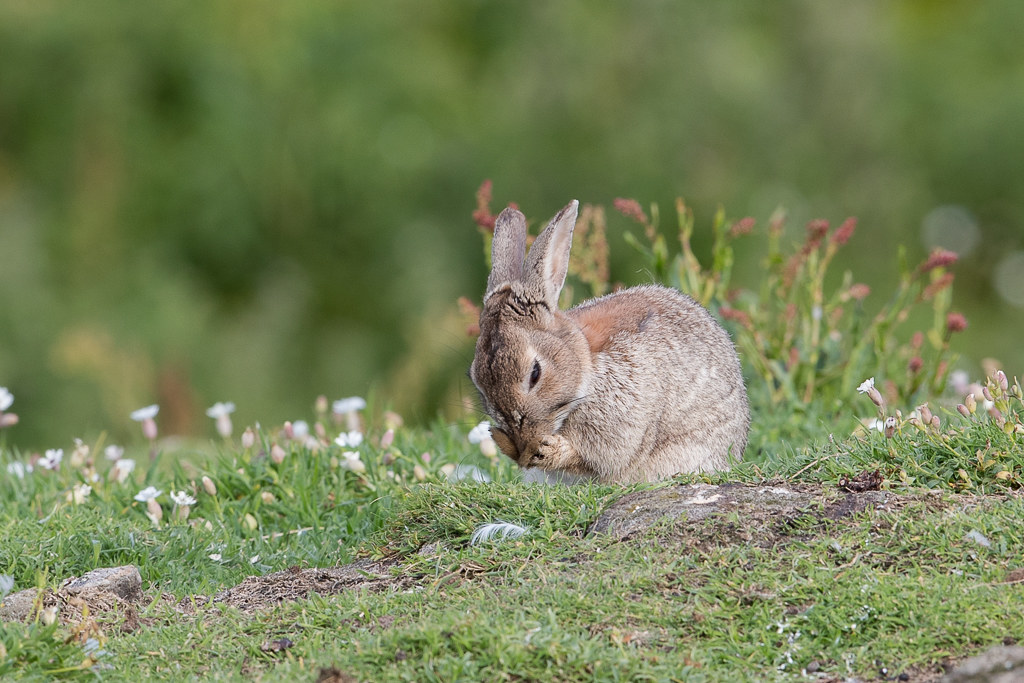 Ah, big floppy ears.
Ah, big floppy ears.
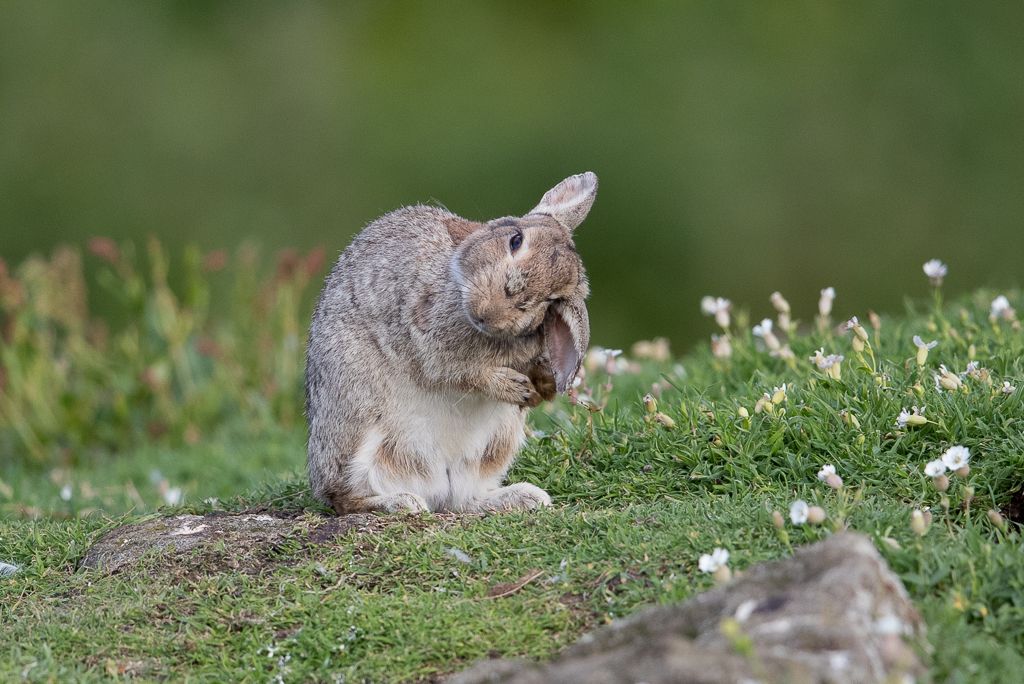 but maybe all is not as we see it! Occasionally fights seemed to break out and it wasn't just a playful chase.
but maybe all is not as we see it! Occasionally fights seemed to break out and it wasn't just a playful chase.
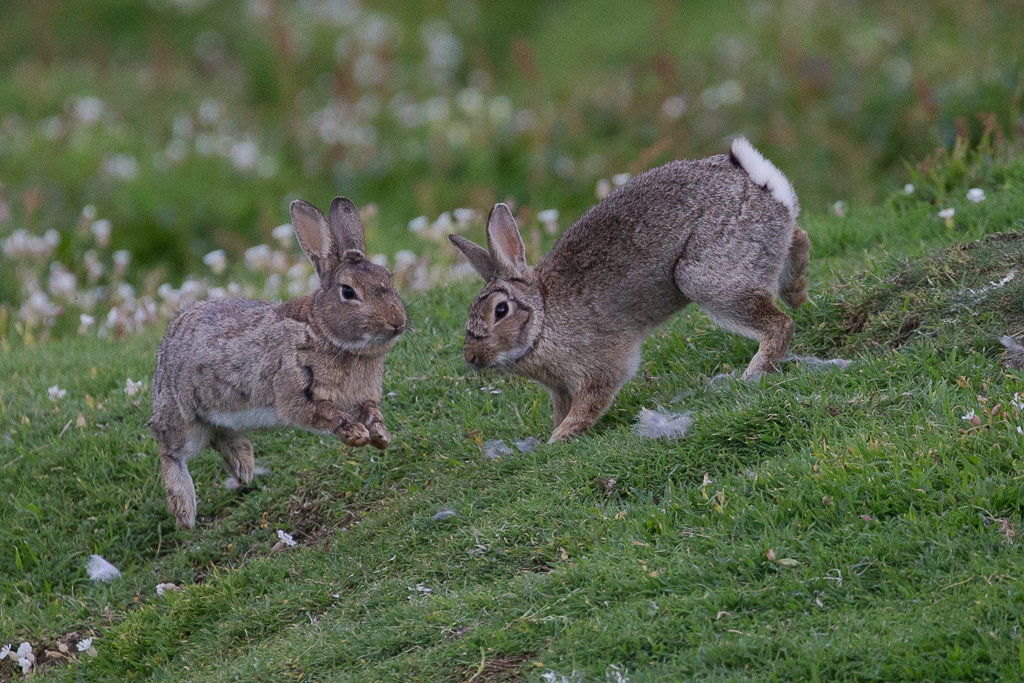 When he's caught up with his rival, he has sunk his teeth in to the others backside!
When he's caught up with his rival, he has sunk his teeth in to the others backside!
 and although they both live to fight another day if you look closely you'll see one now has a bald patch!
and although they both live to fight another day if you look closely you'll see one now has a bald patch!
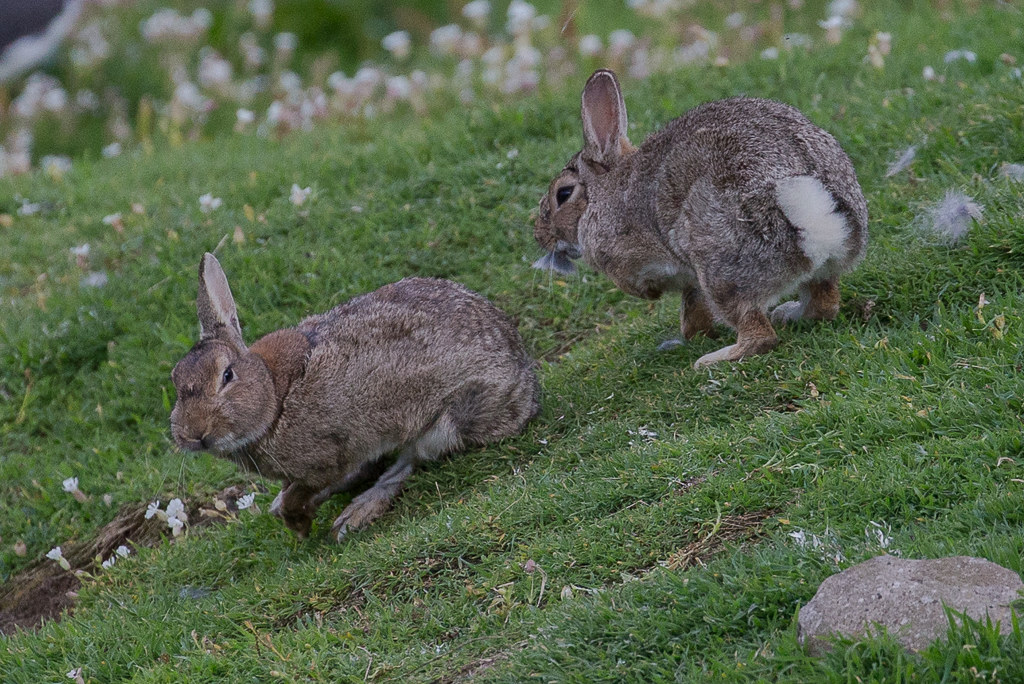 Fortunately for the Rabbits by and large they have no one else trying to eat them. Occasionally a baby might be taken by a Great Black-backed Gull or a passing raptor on migration but by and large they are free of threats. Free to eat, bask in the sun and, well, breed like rabbits do. However, they are a great benefit to the Puffins who use their old burrows to nest in, happily living side by side with their furry friends.
T.B.C.
Fortunately for the Rabbits by and large they have no one else trying to eat them. Occasionally a baby might be taken by a Great Black-backed Gull or a passing raptor on migration but by and large they are free of threats. Free to eat, bask in the sun and, well, breed like rabbits do. However, they are a great benefit to the Puffins who use their old burrows to nest in, happily living side by side with their furry friends.
T.B.C.
Of all the birds resident on the Isle of May, the Puffin can claim to be cutest but the Artic Tern is the most elegant in my opinion. Not only that, it's the most remarkable too. A recent survey using electronic tags has revealed that a Tern on the Farne Islands had completed a 59,650 mile migratory journey to Antartica and back from late July to early May. That's the longest migration of any bird.
This year has been a good year for terns on the Isle of May too. There are more breeding birds than ever before, helped by the provision of more prepared ground and protective measures, but no one quite knows why breeding numbers at a given site fluctuate but they do. There were also a pair of breeding Sandwich Terns this year too, a first record I believe, so along with a good number of Common Terns, there was no shortage of photo opportunities.
This year the season was late. Although many eggs had hatched the chicks were not much in evidence yet, most still hidden beneath a parent bird whilst waiting for the other parent to return with some food. It's when they leave the protection of a parent that they become vulnerable, an easy meal for an opportunistic gull.
Every visitor to the island is given an introductory briefing asking them to a) keep to the footpaths and b) avoid lingering in the tern breeding colonies. The vast majority do just that but sadly one or two can't resist. Some think its great fun to be attacked by the terns, others are just trying to get an interesting shot.
There's no doubt in attack mode they look quite stunning.
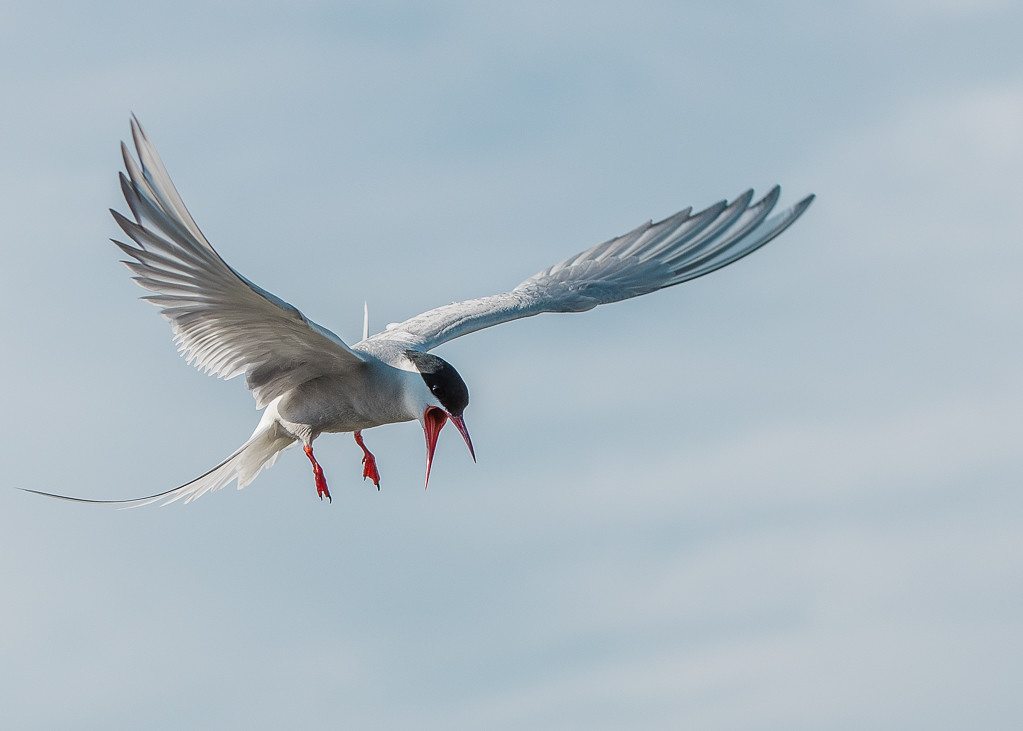 Hanging in the air they often display features like their tail feathers in a stunning fashion.
Hanging in the air they often display features like their tail feathers in a stunning fashion.
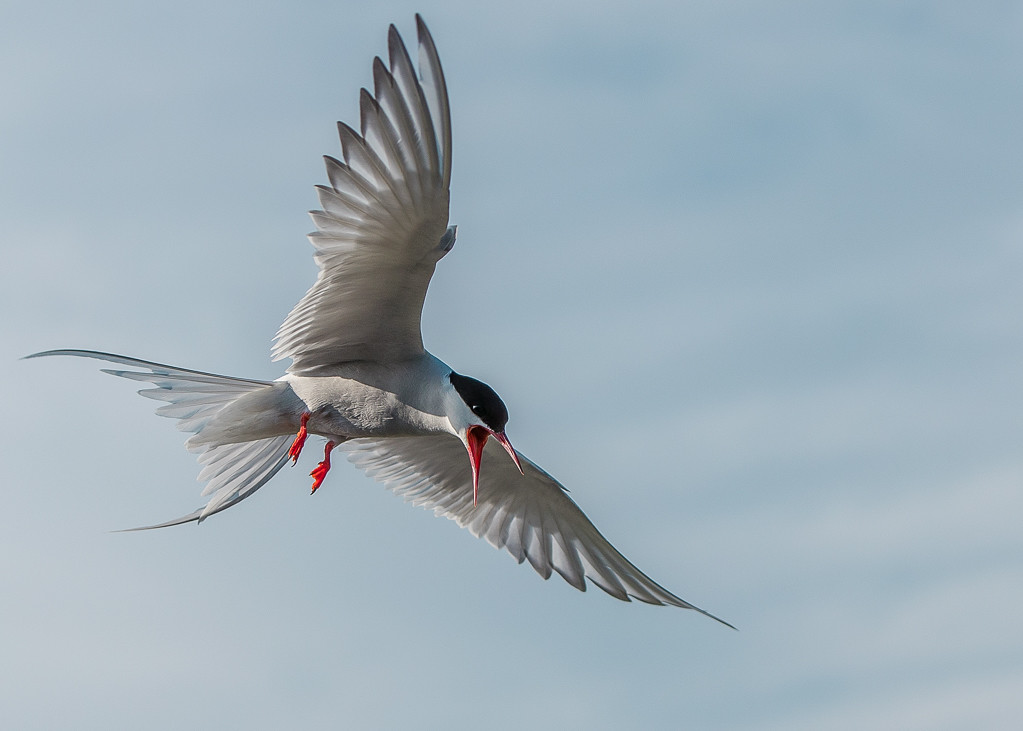 Standing underneath you can get your comeuppance with either a peck on the head or an unpleasant dollop of yesterday's dinner.
Some folk still take no heed. If you have a long lens you just wait for someone else to be the target, but even with a little lens you can get a close up shot.
Standing underneath you can get your comeuppance with either a peck on the head or an unpleasant dollop of yesterday's dinner.
Some folk still take no heed. If you have a long lens you just wait for someone else to be the target, but even with a little lens you can get a close up shot.
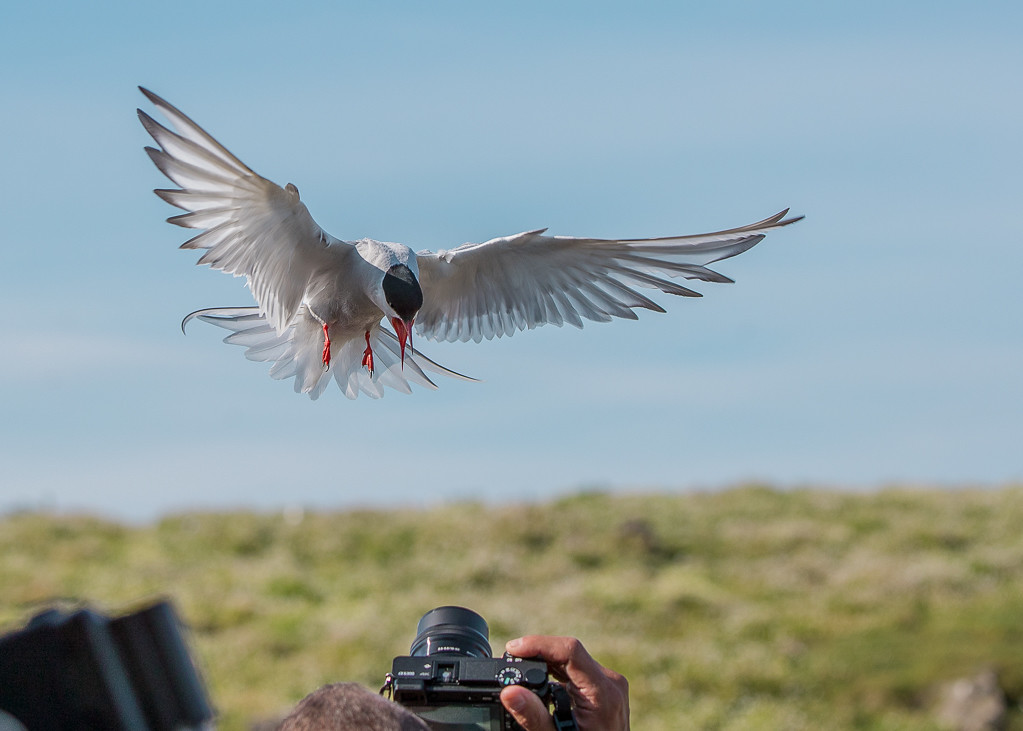 In fairness that guy is stood on the viewing platform and the bird that has decided to see him off was actually one of a pair nesting just in front, it's mate was sat on the nest whilst this one was happily sat on the balcony rail.
In fairness that guy is stood on the viewing platform and the bird that has decided to see him off was actually one of a pair nesting just in front, it's mate was sat on the nest whilst this one was happily sat on the balcony rail.
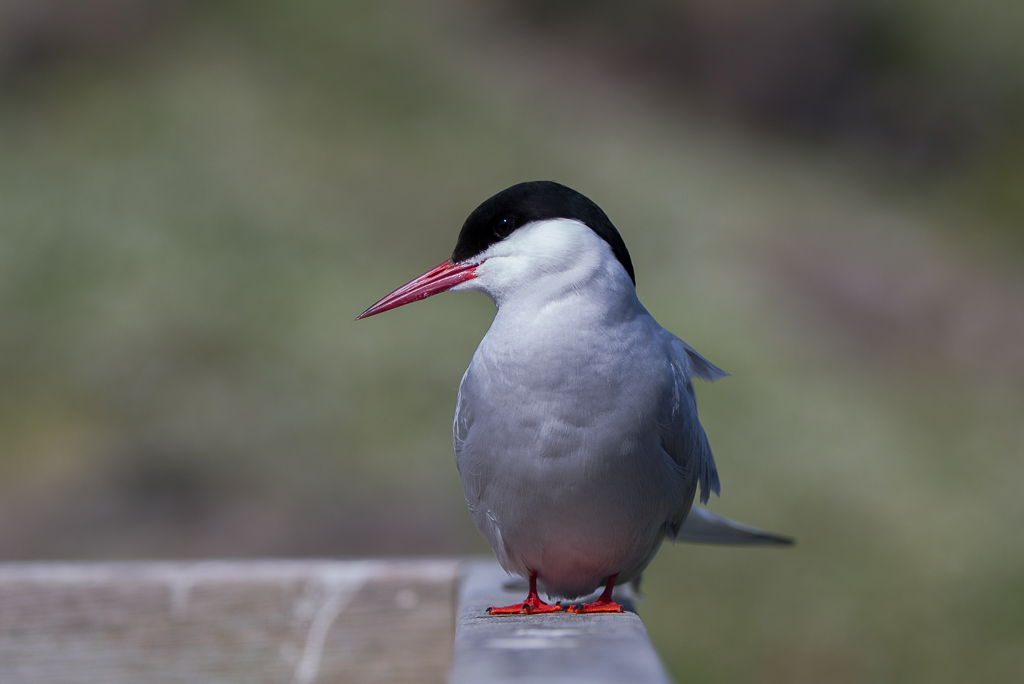 You would have thought they had got used to visitors but they haven't. They don't realise that humans don't present a threat and course if there is just one adult to protect the nest, the minute it gets up, the chick is open to predation. Observers on the island are currently surveying the effects of visitor intrusion on the island to try and work out how negative this is on survival numbers. It's inevitable that there will be disturbance, not only by day trippers but by residents too, Unfortunately some birds choose to nest right next to main thoroughfares such as from the harbour on to the island.
Personally though I think shots of the birds returning with food are just as appealing if not more so. Standing under the cover of the visitor centre the Terns are not concerned about you and just get on with their daily business.
You would have thought they had got used to visitors but they haven't. They don't realise that humans don't present a threat and course if there is just one adult to protect the nest, the minute it gets up, the chick is open to predation. Observers on the island are currently surveying the effects of visitor intrusion on the island to try and work out how negative this is on survival numbers. It's inevitable that there will be disturbance, not only by day trippers but by residents too, Unfortunately some birds choose to nest right next to main thoroughfares such as from the harbour on to the island.
Personally though I think shots of the birds returning with food are just as appealing if not more so. Standing under the cover of the visitor centre the Terns are not concerned about you and just get on with their daily business.
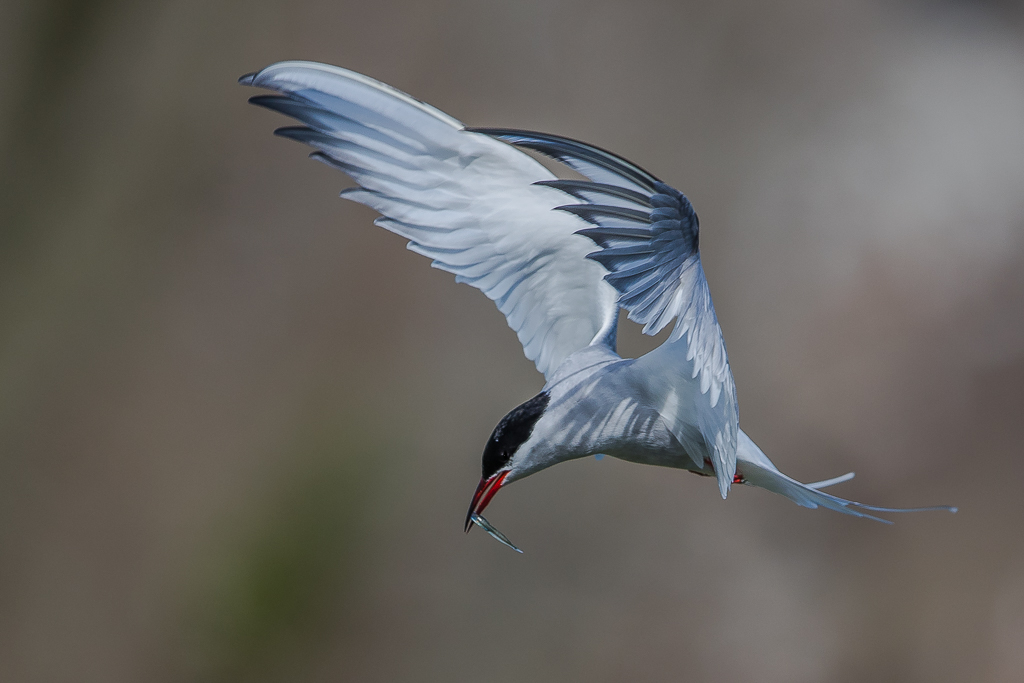 Not all return with food either.
Not all return with food either.
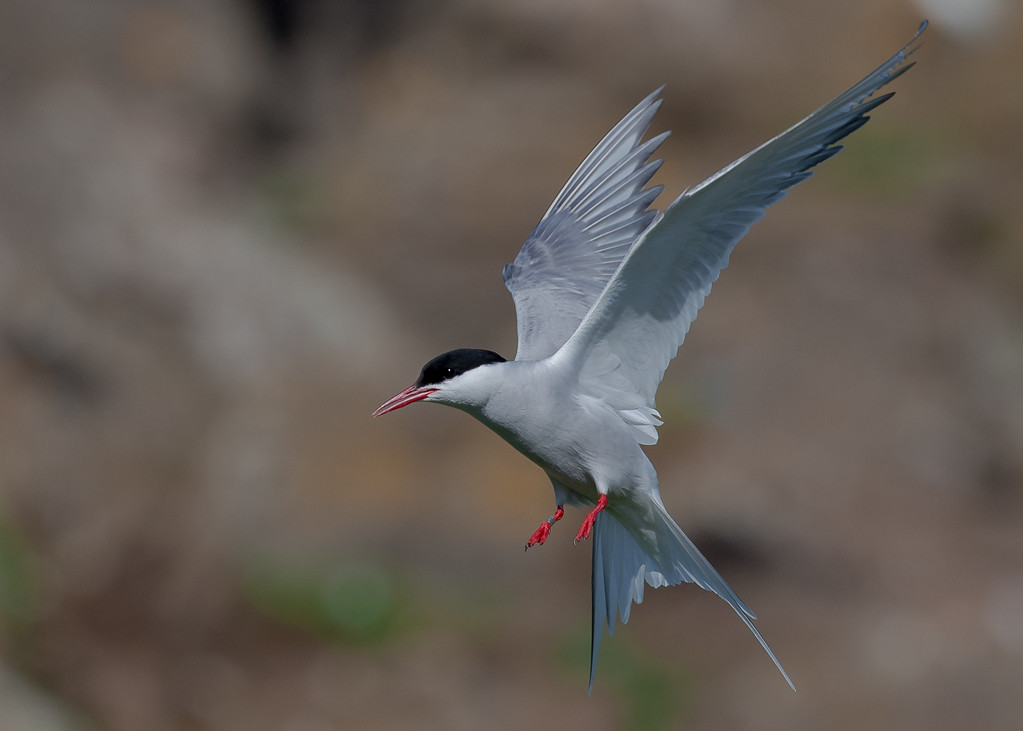 but when you are not looking up in the air you also have an opportunity for a better bokeh, such as the yellow litchen covered rocks.
but when you are not looking up in the air you also have an opportunity for a better bokeh, such as the yellow litchen covered rocks.
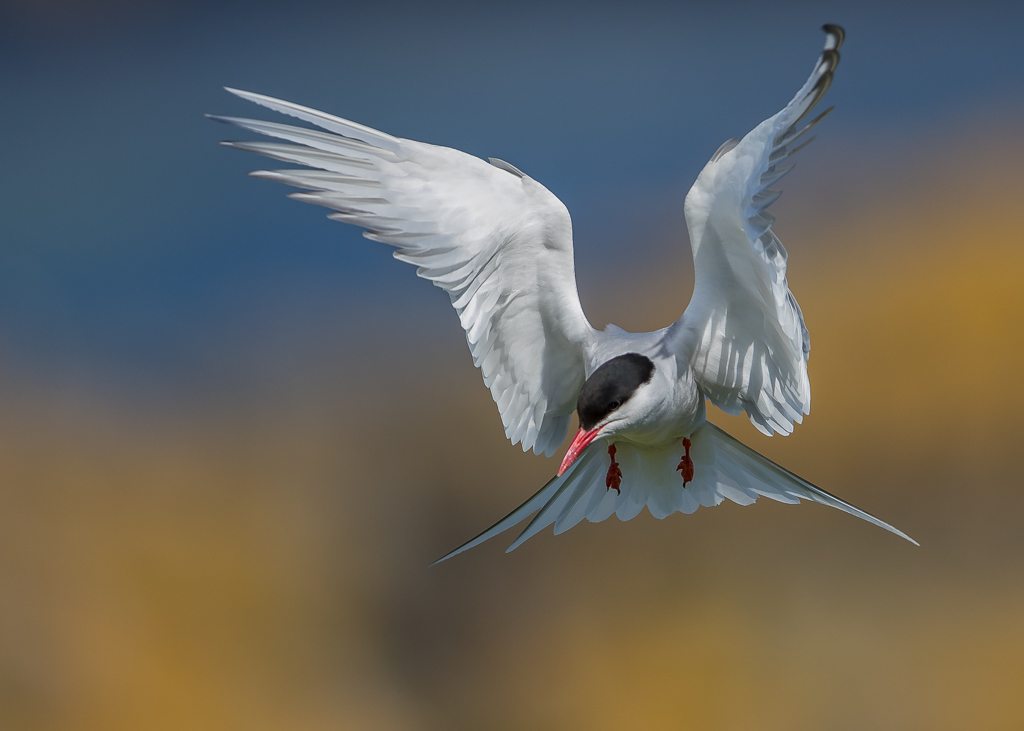 What I prefer though is to watch the birds on water.
What I prefer though is to watch the birds on water.
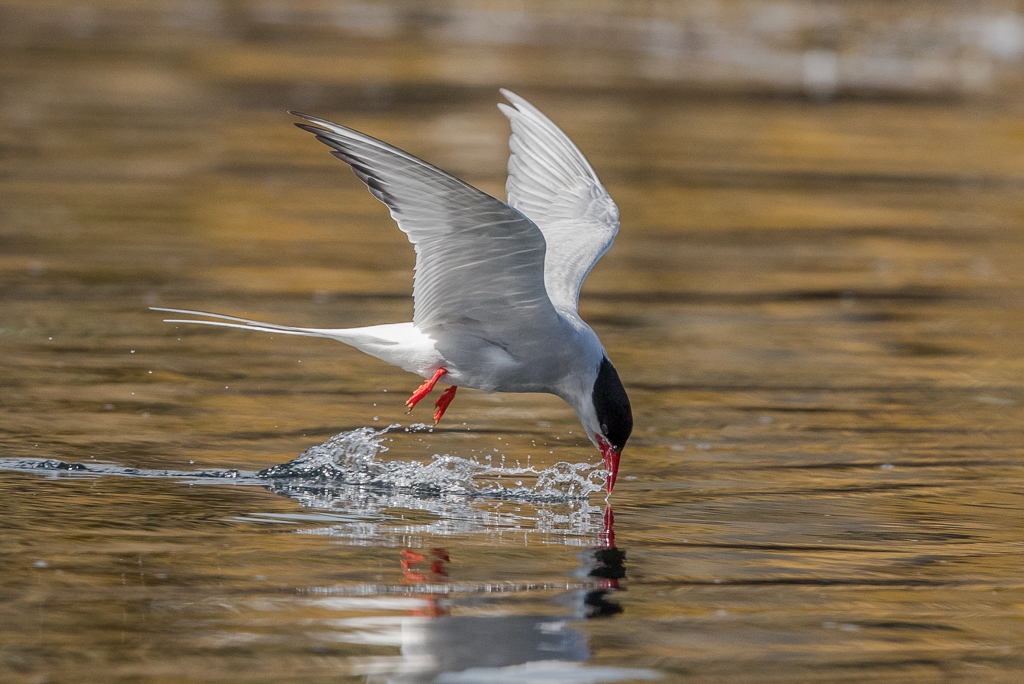 Sometimes they appear to drink
Sometimes they appear to drink
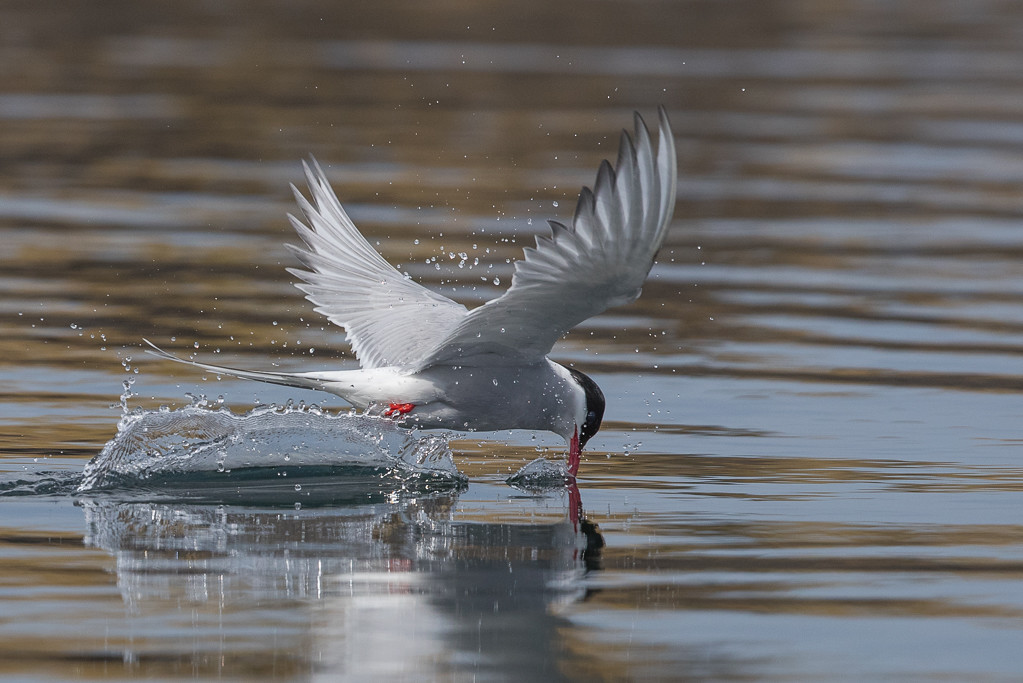 or possibly they are just washing their bills after a spot of grooming.
or possibly they are just washing their bills after a spot of grooming.
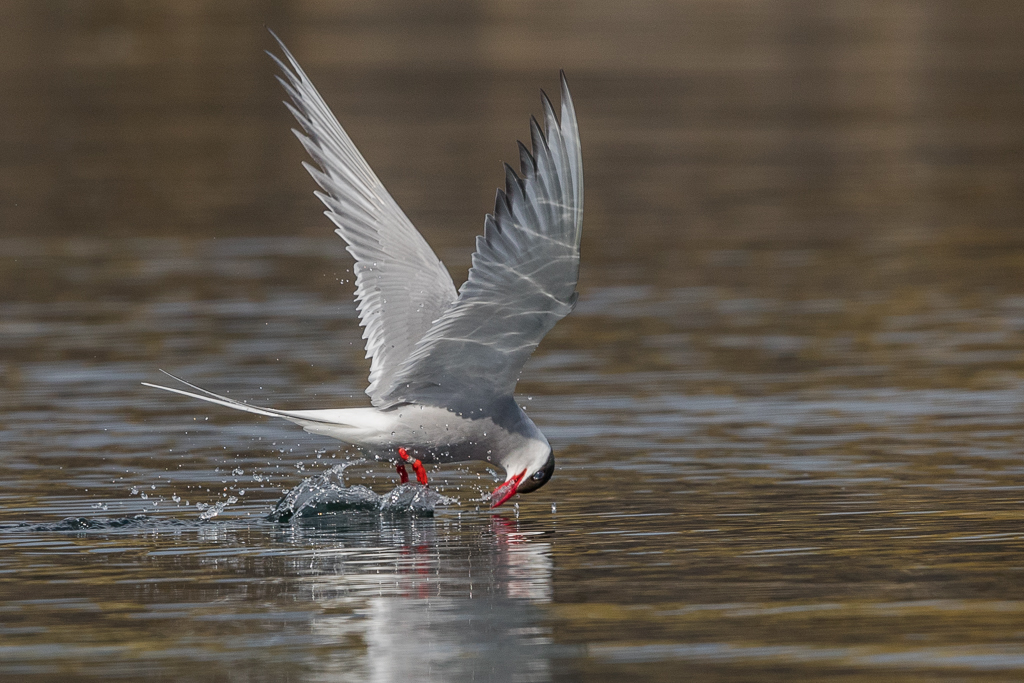 What I have noticed though is that all is not what it appears.
What I have noticed though is that all is not what it appears.
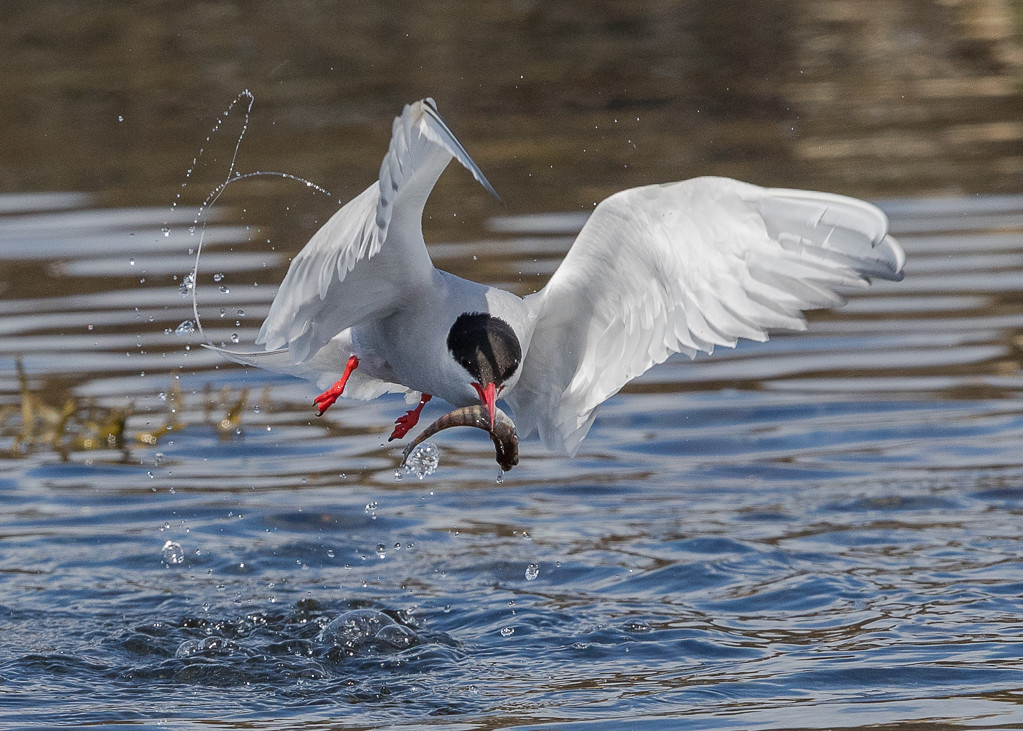 This isn't the bird rising from the water after a successful dive.
This isn't the bird rising from the water after a successful dive.
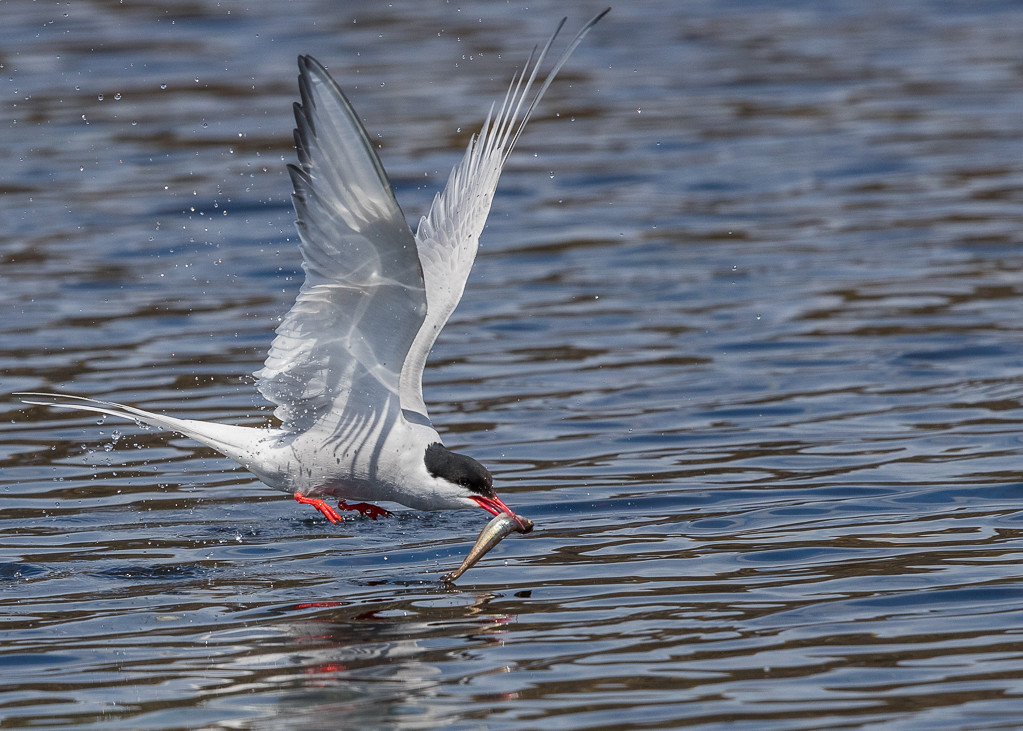 The Terns appear to refresh the fish by dipping it in the water.
The Terns appear to refresh the fish by dipping it in the water.
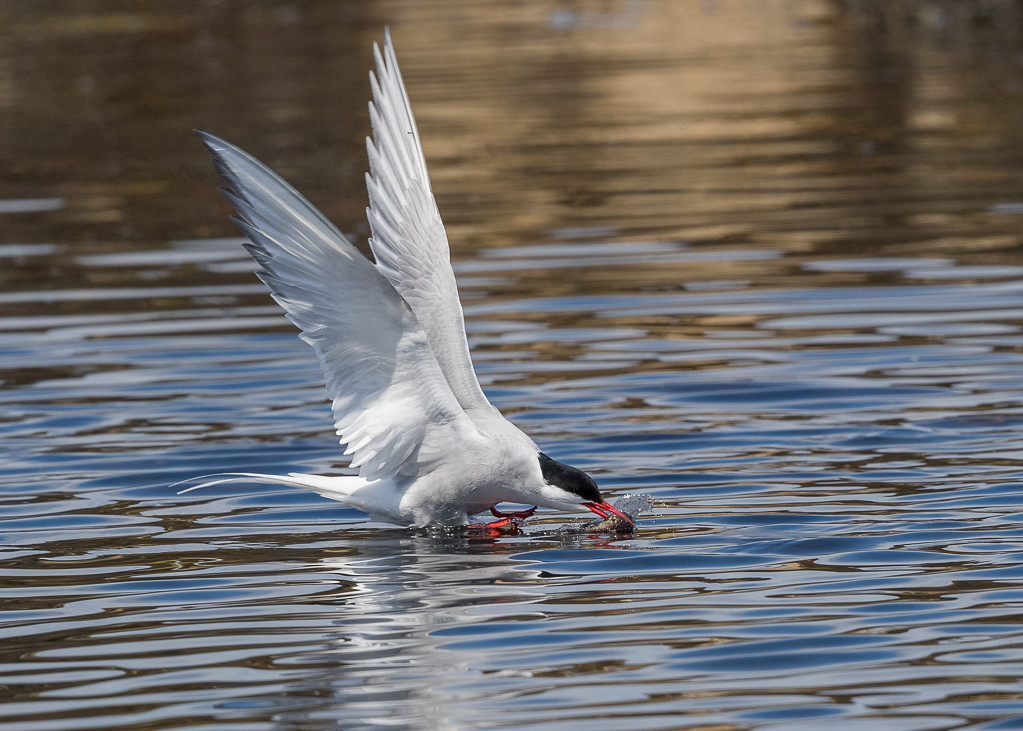 I am only guessing.
I am only guessing.
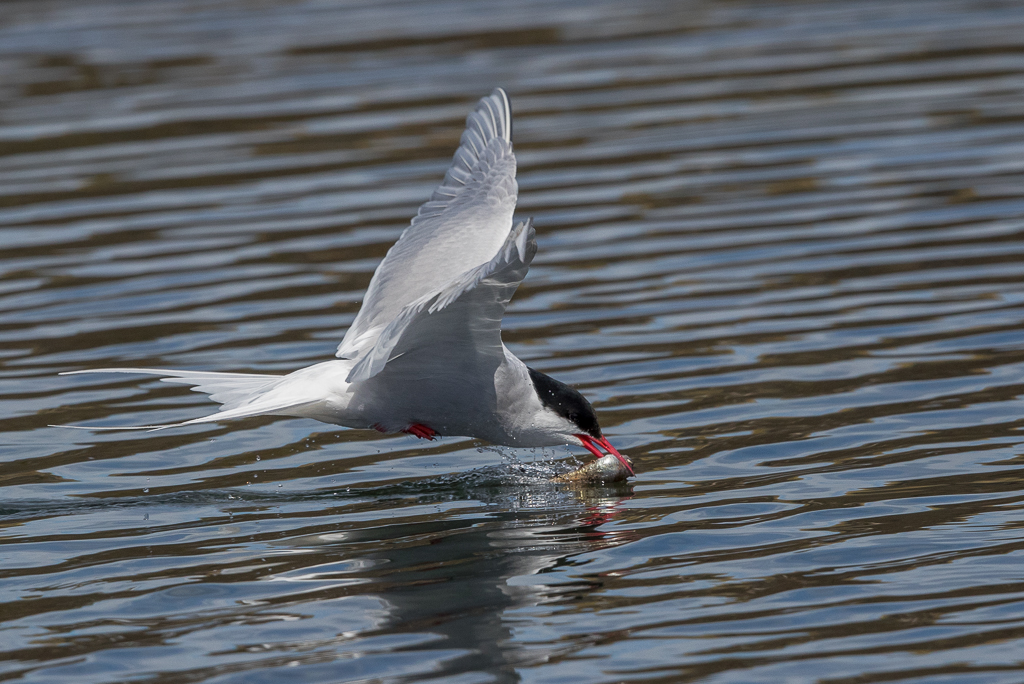 but perhaps if they have flown some distance with the fish it has become air dried and more difficult for a young chick to eat.
but perhaps if they have flown some distance with the fish it has become air dried and more difficult for a young chick to eat.
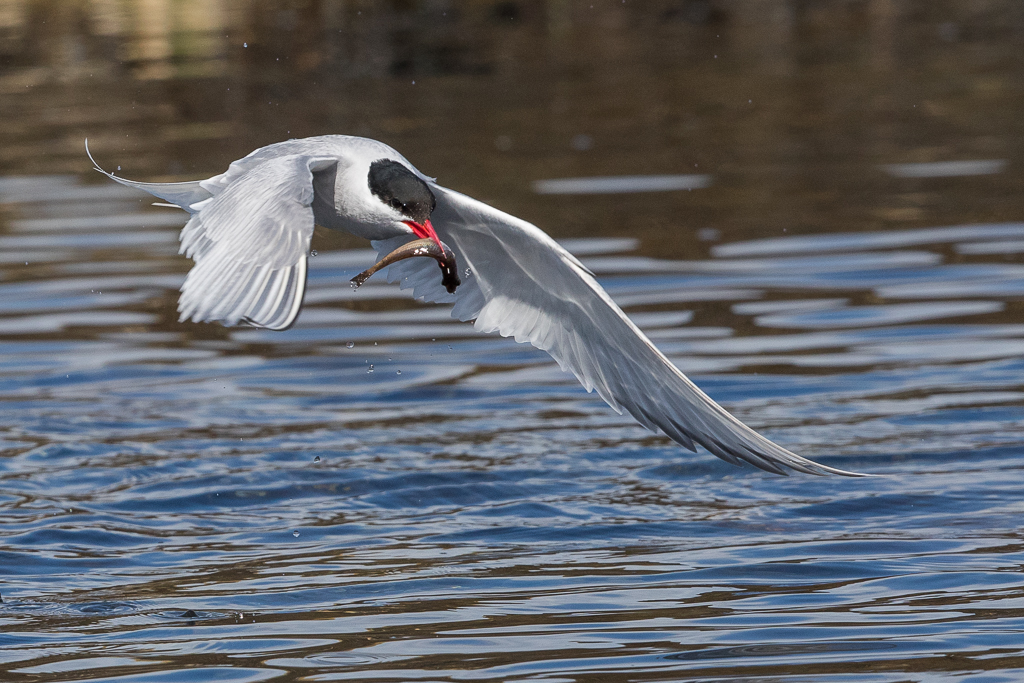 and a return to water makes the fish slimy and easy to swallow.
Certainly makes the Terns amongst my favourite photo subjects.
T.B.C.
and a return to water makes the fish slimy and easy to swallow.
Certainly makes the Terns amongst my favourite photo subjects.
T.B.C.
























































